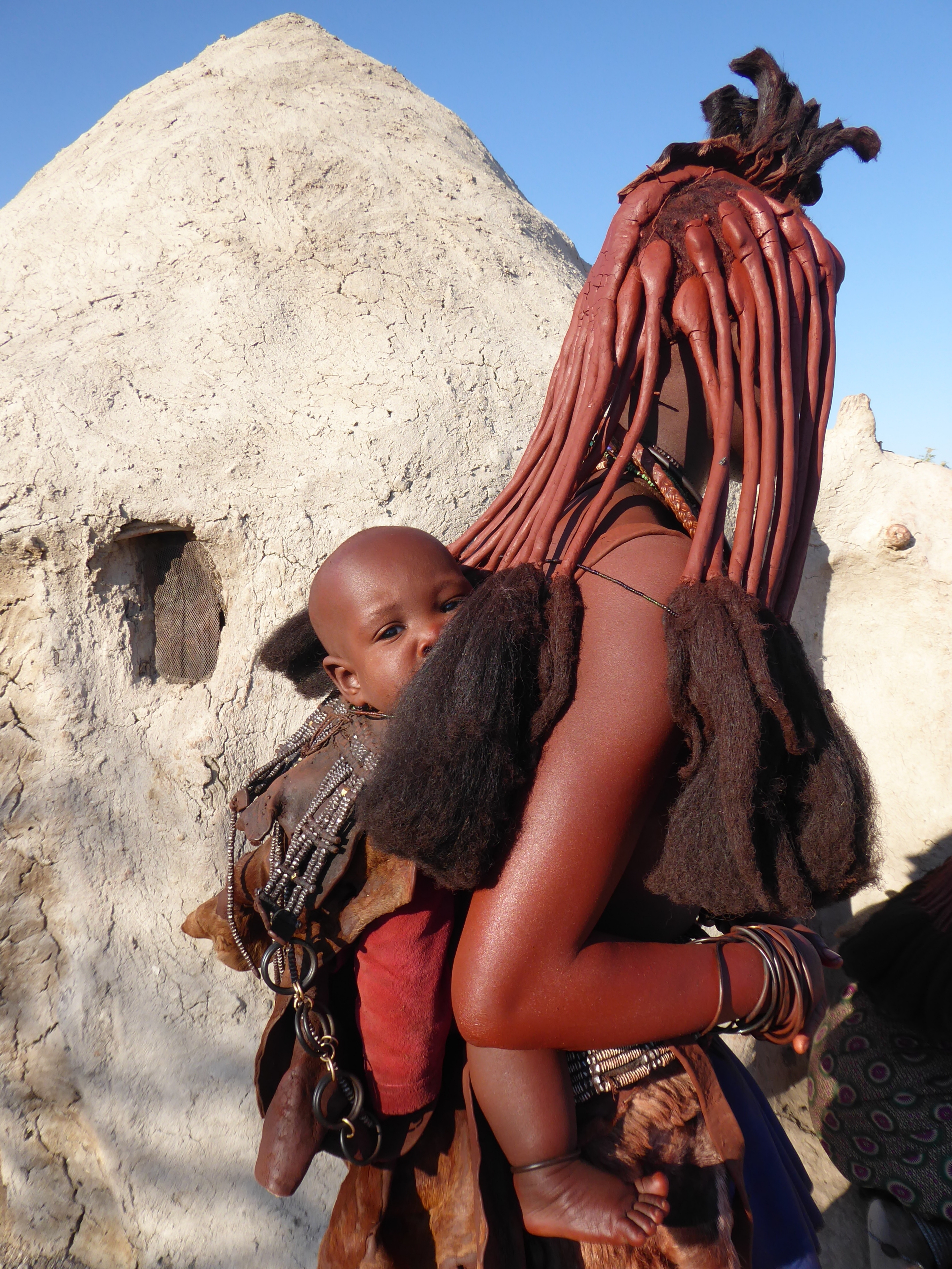
28 May to 1 July, 2019
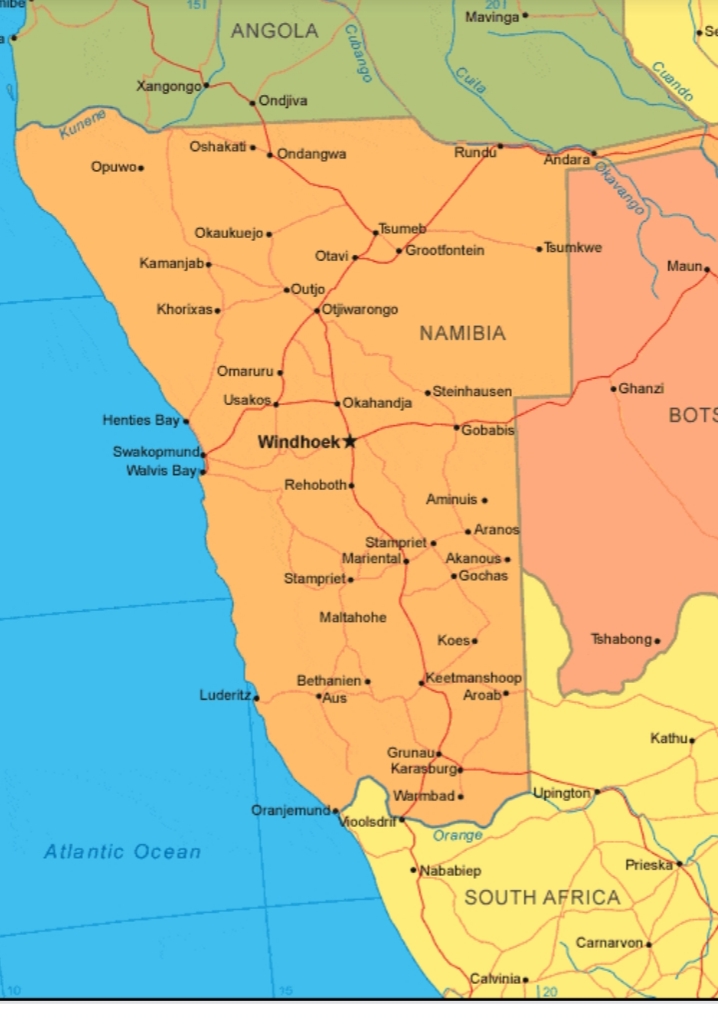
I. Inauspicious Beginnings
I knew little about Namibia when I booked my flight from Cape Town to its capital, Windhoek. A friend had raved about Namibia’s beauty, and I’d seen pictures of its iconic red sand dunes years before in some travel magazine, but I’d spent little time planning my trip. South Africa had kept me much busier than I’d imagined. I figured I’d organize my travels once I got there.
I envisioned discovering the country at a leisurely pace, with ample time to relax a week or more in some coastal town. The idea was to choose the destination of my days as they unfurled and above all not to rush. Yet, somehow, this idyllic scenario was completely forgotten during the two-hour flight.
At immigration, on the form where it asks the length of the intended stay, I wrote “three weeks”. I cannot account for this momentary lapse of judgement. I suppose somewhere in the back of my mind I assumed I would automatically be given the maximum stay on my visa, ninety days, regardless of what I wrote.
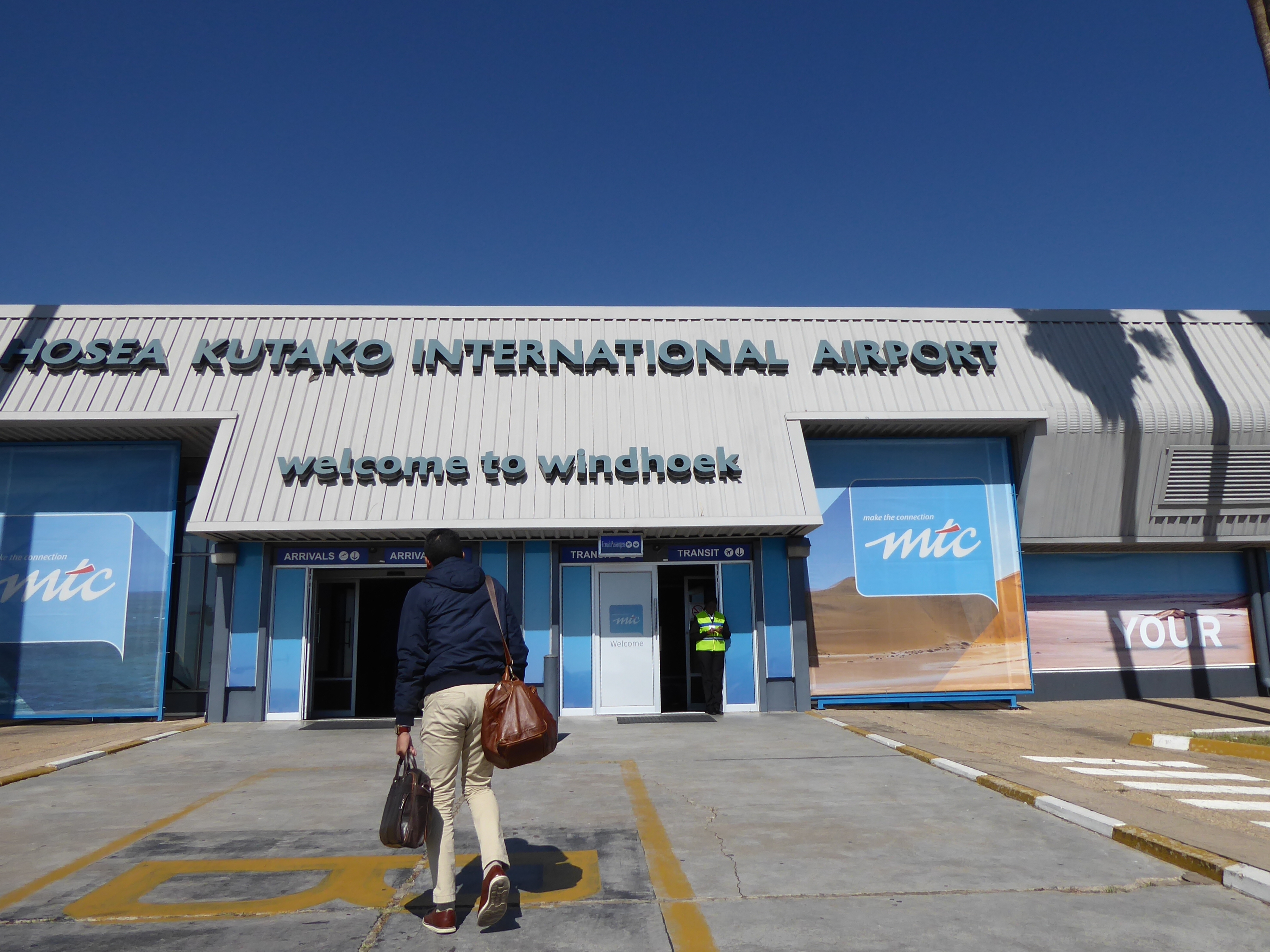
The official at immigration, asked me several questions with not a hint of a “Welcome to Namibia” tone to his voice. He viewed me with suspicion when I said I hadn’t made specific travel plans. I didn’t want to lie and I couldn’t imagine that it was unusual for travelers to enter the country without a fixed address or defined itinerary.
Then I realized that three weeks was completely unrealistic. I asked him for additional time. He didn’t seem pleased with me or the idea of my entering his country–odd given that tourism is an important part of Namibia’s economy. I did my best to convince him that, despite lacking a specific plan, I was an entirely well-intentioned traveler. He softened and stamped my visa valid for five weeks.
My recent travels and the cold nights in homes without heat–common in South Africa–was suddenly taking its toll. I considered staying in Windhoek until I felt better, but the list of places I wanted to see kept getting longer. Five weeks would not accommodate seeing all I hoped to, resting before setting off, and a lengthy stay at the seaside. Something(s) would have to give.
I settled in to the pleasant Tamboti Guesthouse and started planning my itinerary, not something I generally do that far in advance. The excellent Full Suitcase website and suggestions from the son of an acquaintance, who worked as a guide in Namibia, were extremely helpful. I drew a calendar for my five-week stay and set up a day-to-day plan. A flurry of phone calls followed and I reserved the more popular accommodations in advance. The risk of being fully booked was high and after driving all day with very few options, I didn’t wish to take any chances.
My trip was taking shape (as was a bad cold). I had less time in certain places than I would have liked, and there was little room for a change of plans, but I wasn’t compromising too much on the places I wanted to visit. (However, since the situation had been entirely avoidable, it took some time before I stopped kicking myself.)
I originally thought I’d share a car and the driving with other travelers, but that did not pan out. The ones I met proposed itineraries even more quickly paced and ambitious than my own.
As a rule Namibia is one of the safest countries in Africa, but one of the least densely populated in the world. I had concerns about breaking down somewhere with no one to assist me.
In the meantime I went to various car rentals looking at my transportation options. Although camping in Namibia with a specially designed truck is very popular, and sleeping under the stars was appealing, setting up a tent each night and cooking my meals after a long day on the road was not. I decided to rent a 4×4 SUV and take my chances with finding the rest of my accommodations.
Windhoek does not entice the visitor with many pretty places, but being told there was little to fear in walking around on my own, after all the warnings I’d heard in Cape Town, gave it a certain appeal.
I also noted a more fluid mix of people in shops and restaurants, unlike what I’d seen in South Africa. Although Namibia, then called South West Africa, had been subjected to the same apartheid laws while under South Africa’s rule, wounds seem to have healed better here. Namibia, taking its name from the Namib Desert, only gained its independence in 1990.
II. On the Road: Week One (Windhoek to Fish River Canyon)
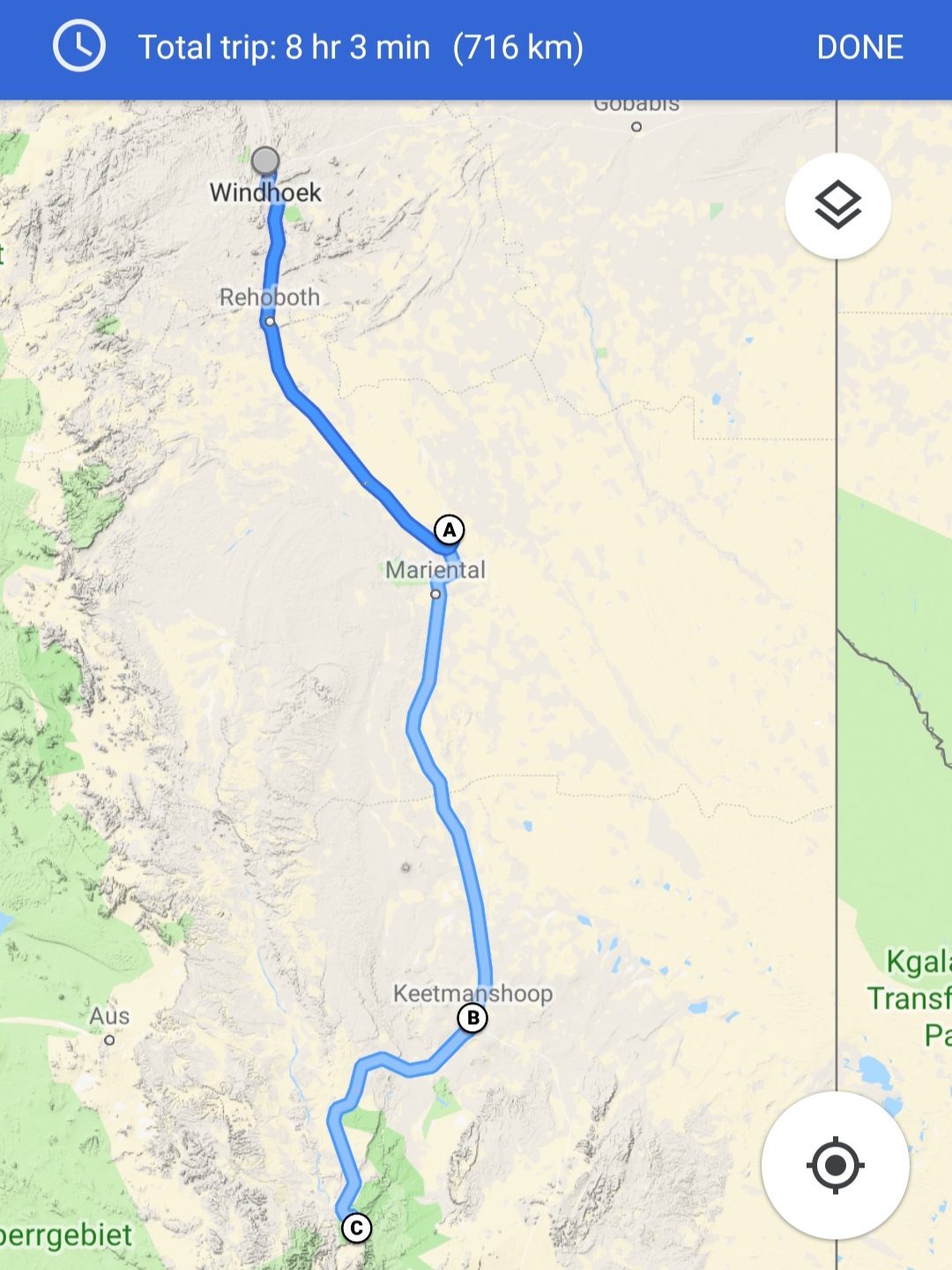 Windhoek, Bagatelle Kalahari Game Ranch, Keetmanshoop, Fish River Canyon (The actual time travel was always much longer than the time indicated on the map.)
Windhoek, Bagatelle Kalahari Game Ranch, Keetmanshoop, Fish River Canyon (The actual time travel was always much longer than the time indicated on the map.)
My bad cold persisted as I set out from Windhoek toward my first destination, the Bagatelle Kalahari Game Ranch . I’d stocked up on bread, apples, peanut butter, dried fruit, nuts, twenty-five liters of water, and the tent and sleeping bag that I’d bought for AfrikaBurn. At least if I got stuck somewhere on the road I’d have ample water, food, and shelter.
I was soon on the B1, a two lane, mind-numbing, straight, paved highway with no shoulder. The sudden passing of impatient locals, greatly exceeding the speed limit, the large trucks rushing by in the opposite direction, creating a wind effect that tugged at my car, and the monotony of the road left little room for enjoyment. Fortunately, there was an occasional settlement where I got a glimpse of local life, and I was already accustomed to driving on the left side of the road from my time in South Africa.
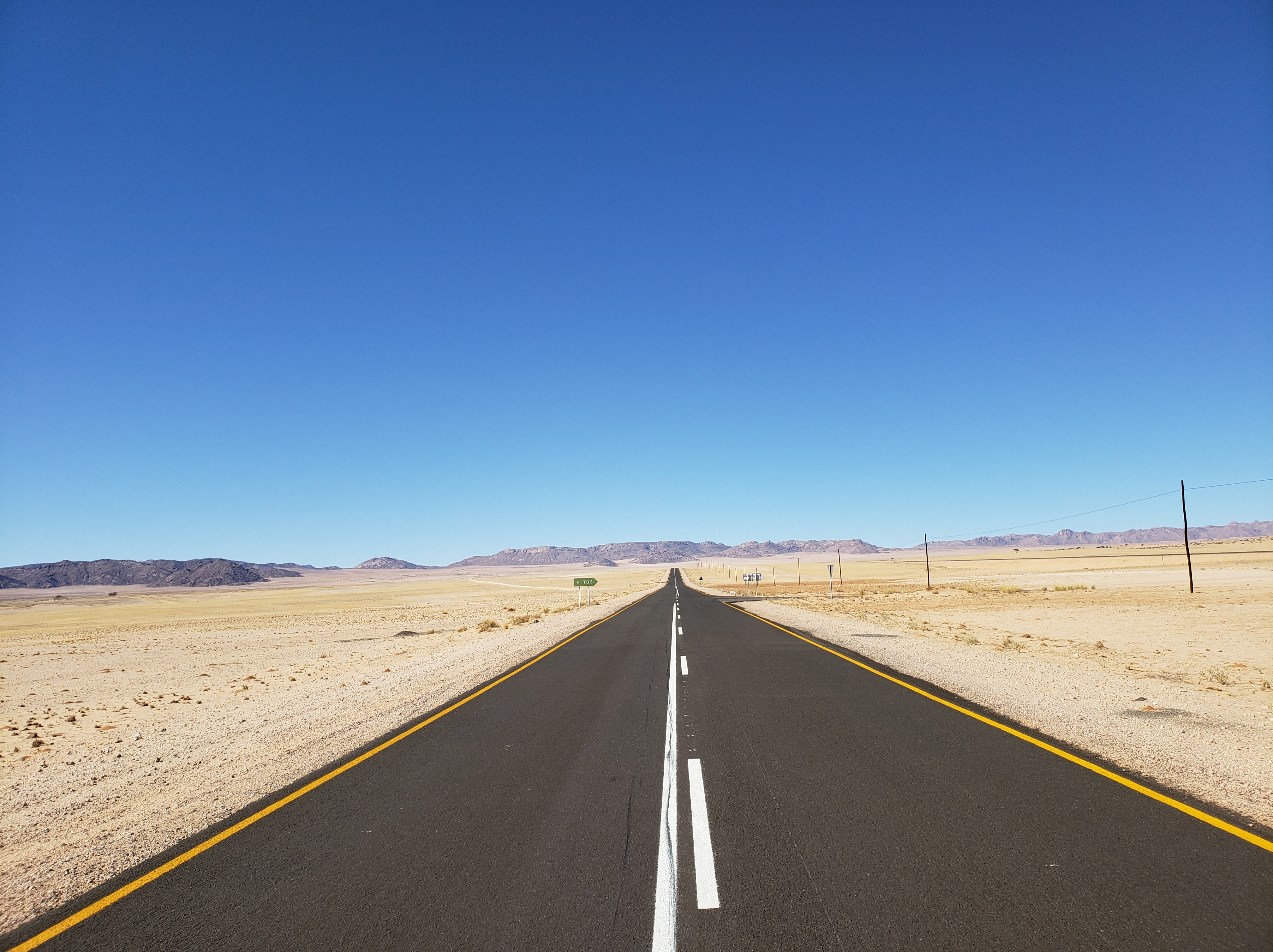
When I’d picked up the rental car, in addition to watching very carefully how to change a flat tire, I was told to fill up the gas tank at every opportunity and keep an eye on the tires’ pressure.
I dutifully stopped at a service station, got gas, and watched a few khaki-attired tourists in fully equipped camping trucks doing the same. This was the beginning of the high tourist season. I felt some relief. If I broke down somewhere, I was bound to see someone on the road.
Taking a turn off the B1, onto a gravel road, and then a long sandy road, I finally pulled into the parking lot, hours later, of the Bagatelle Kalahari Game Ranch. A group of tourists were just setting off in a safari truck to tour the private game reserve. The last thing I wanted to do was to get into another vehicle. I opted to stroll upon the gentle dunes of red sand, watch antelope drinking from a water hole, and while the others were in search of game, I was delightfully entertained by a family of meerkats.
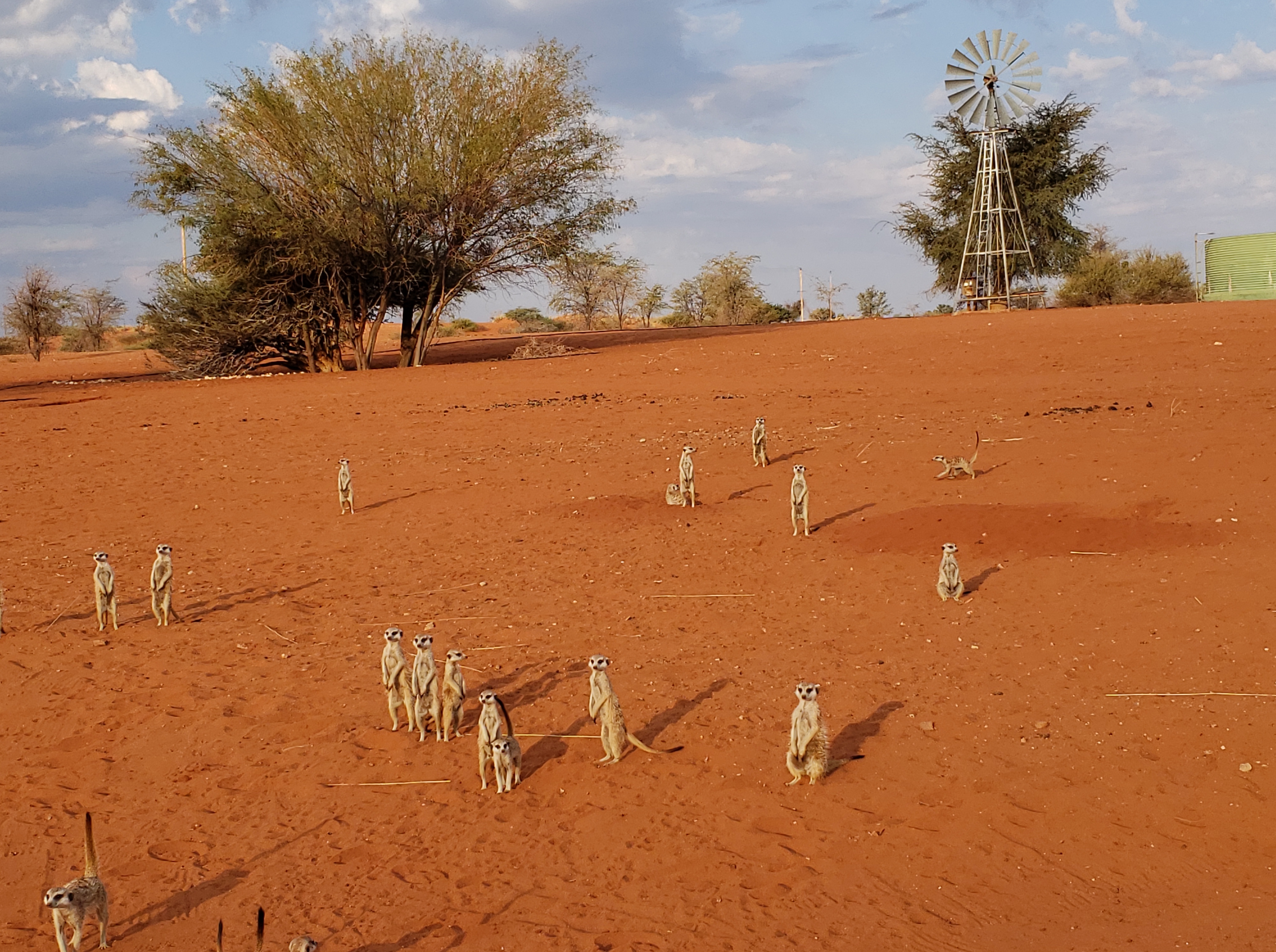
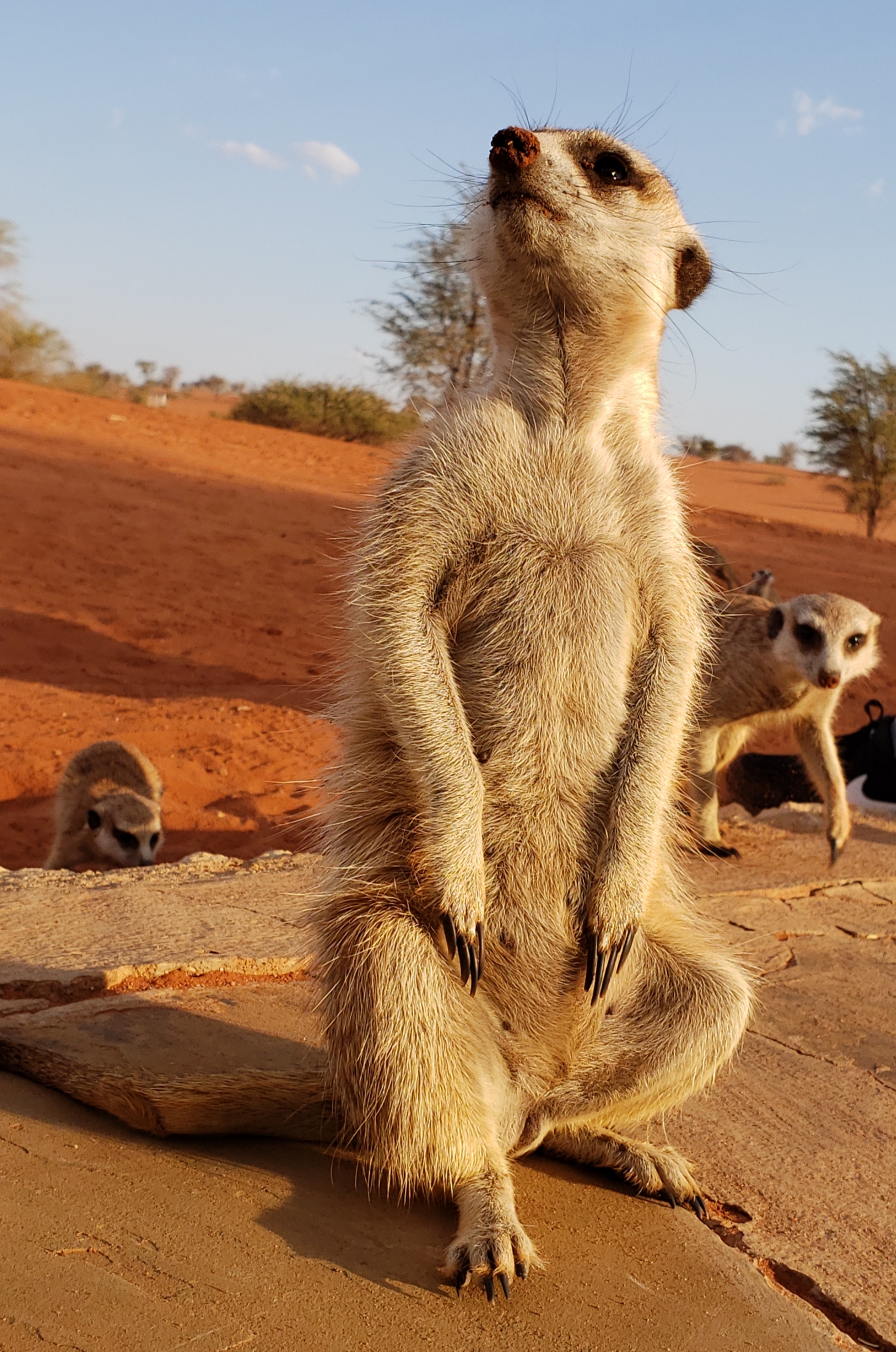
Lodges do not often cater to solo travelers. Most guests/tourists come in groups or as couples and as a rule do not converse with people they do not know. But I met some lovely people all the same and chatted with the amicable staff. However, the silence of the desert and encounters with the wildlife were my favorite moments.
Two days later I was retracing my way back to the B1 and heading south to Keetmanshoop.
******
Keetmanshoop’s correct pronunciation, ala Afrikaans, does not resemble the spelling at all. I won’t even try to demonstrate it here. Locals must have been used to the mangling of its name and never corrected me. I only discovered my mispronounciation, by chance, weeks later. It was a convenient stopover on my way south to Fish River Canyon.
As I headed to a motel in town, I heard gospel music, followed the voices to a small store front, and pulled up outside. I man in a white shirt and dress pants approached my car. He looked at me with some curiosity. I had the feeling few, if any, white folks stopped by. “Hi, may I come in and listen to the service?” I asked. He politely said a service would be offered later in the afternoon. This was a church program for teens. With the music still flowing onto the street, I asked if I could go in any way. He hesitated. I sensed the program was generally not open to the public. However, he consented. I shook his hand, thanked him, and took a seat in the back of an open area with fold up chairs placed in rows. Others in attendance gave me a warm smile.
The teenage boys and girls, in conservative attire, sang beautiful harmonies and performed skits against the evils of crime, drugs, and alcohol. Then a video was shown and a man reiterated those evils, adding masturbation to the list. Themes of poverty, despair, and suicide were prominent in his talk. It was a sobering message reflecting the local life and tentative futures. Not surprisingly hope was offered: Ones salvation could be found in prayer.
I settled into the motel and before nightfall drove to the nearby Quiver Tree Forest and Giant’s Playground. They offered a chance to stroll through small but lovely parks.
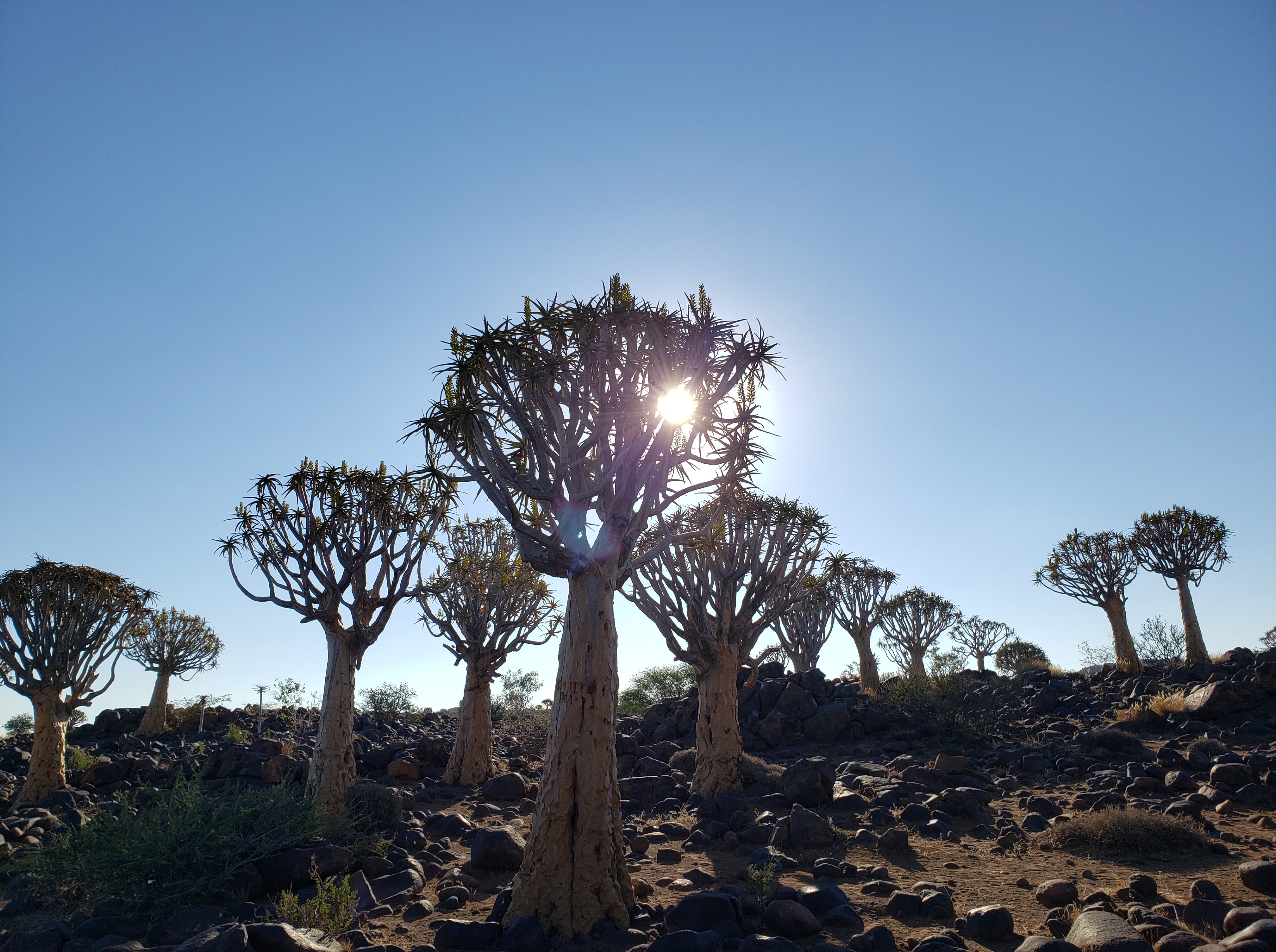
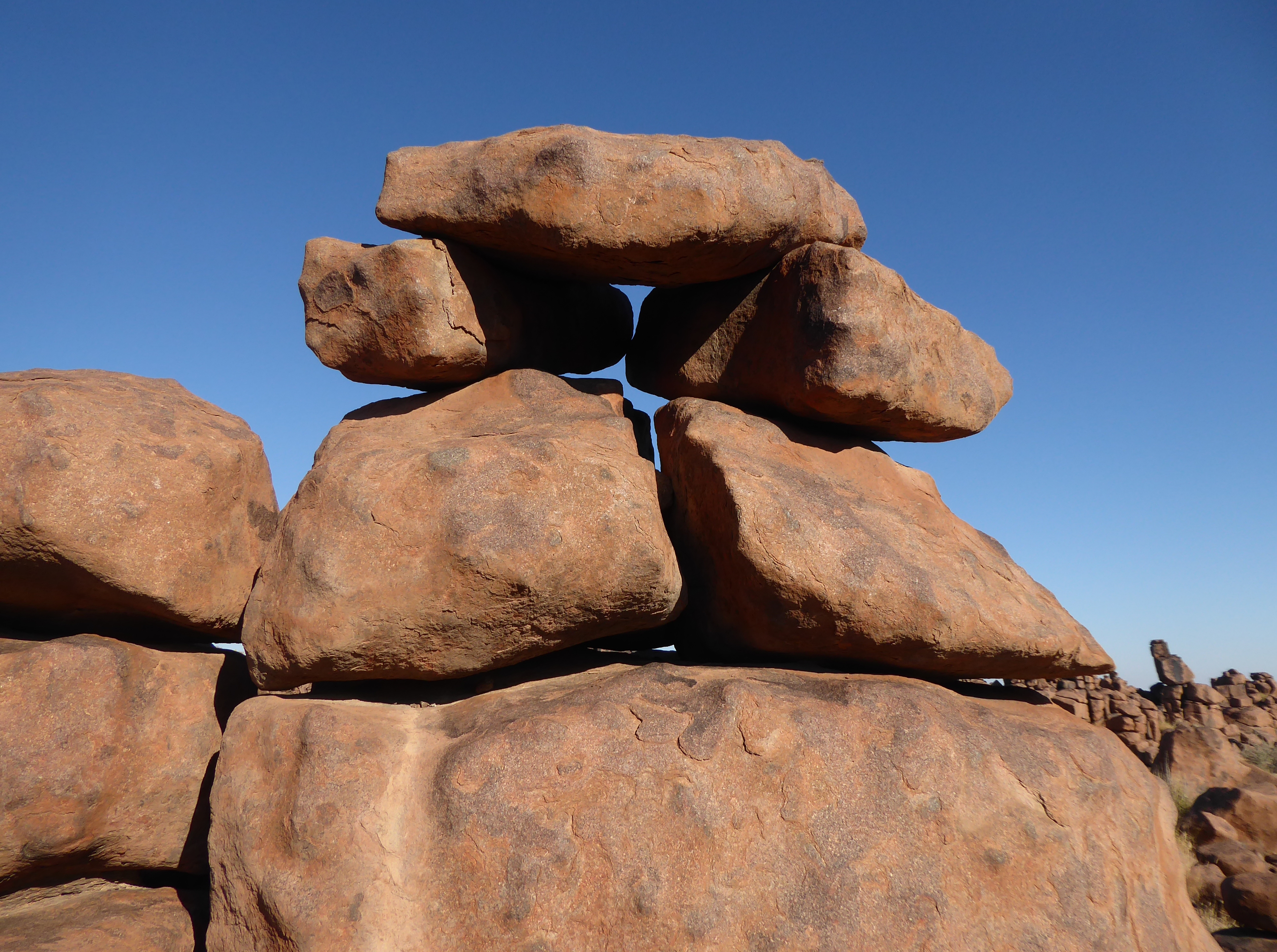
******
With very few exceptions, at least from my experience, towns and cities in Namibia offer little appeal for travelers. They are primarily places to get gas and provisions before moving on. Although my visit was quite pleasant, I wasn’t sorry to leave Keetmanshoop.
Reaching Fish River Canyon, Namibia’s Grand Canyon, was difficult. The monotonous paved road was followed by the adventure of driving on rough roads where the risk of a flat tire was a constant concern.
Travel can not be measured in distance–some roads are so bad that going more than 40km/hr (25 mi/hr) would be foolhardy. But heading into a rough and tumble landscape, a unique beauty was revealed. The barren, stark plains, with an open expanse of sky possessed a primal appeal. These lands looked as if man had never set a foot on them.
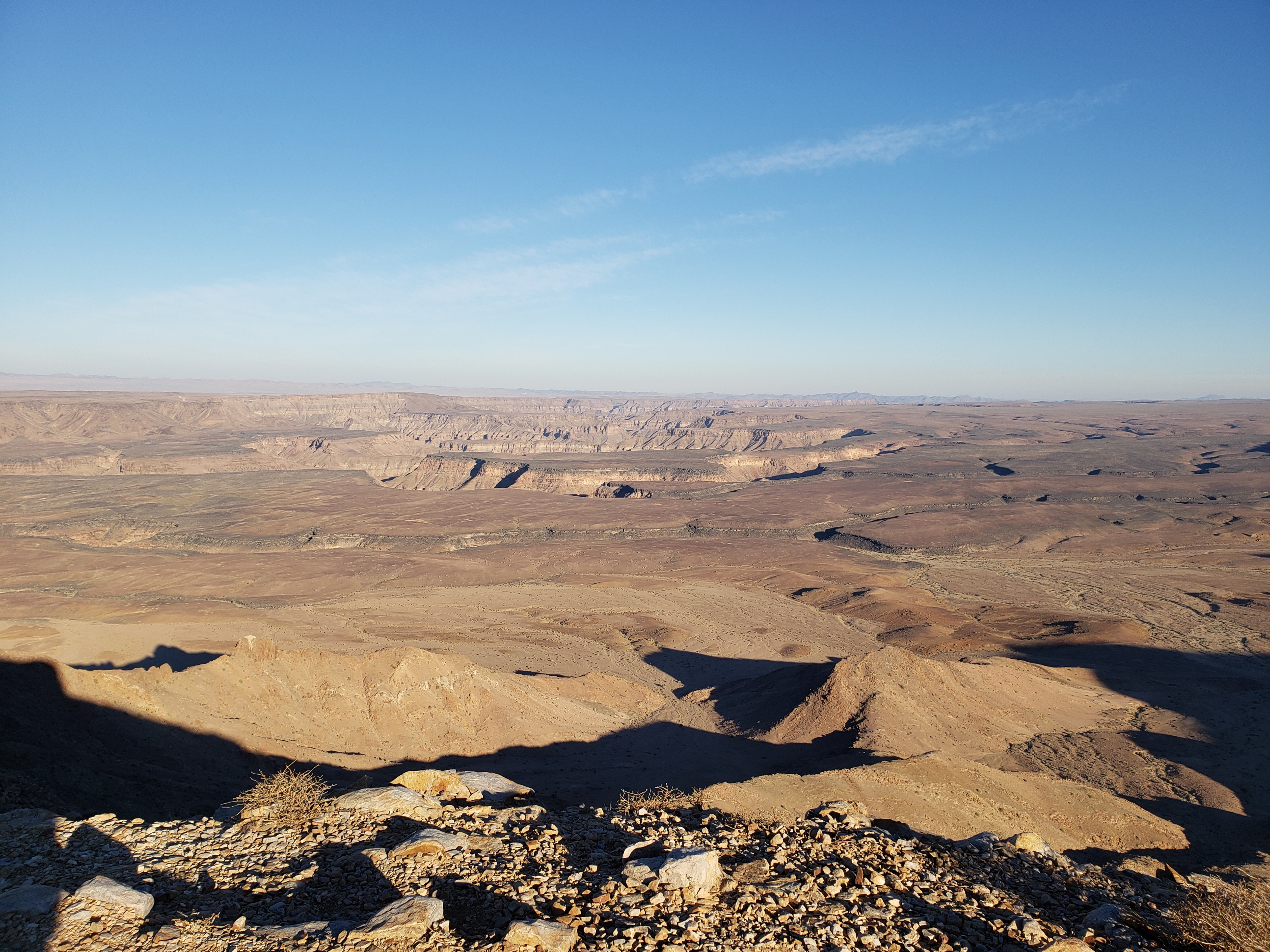
This made my arrival at the Fish River Lodge all the more incongruous. There perched on the rim were twenty unobtrusive, beautifully designed chalets offering an unobstructed view of the canyon. The lucky few sipped cocktails beside the pool taking in the splendor. I was lucky to book three nights. I reveled in the comfort, took walks along the canyon’s rim, and gazed each night at the blanket of stars. It didn’t take long for my cold to be a distant memory. Even the rough road back seemed easy.
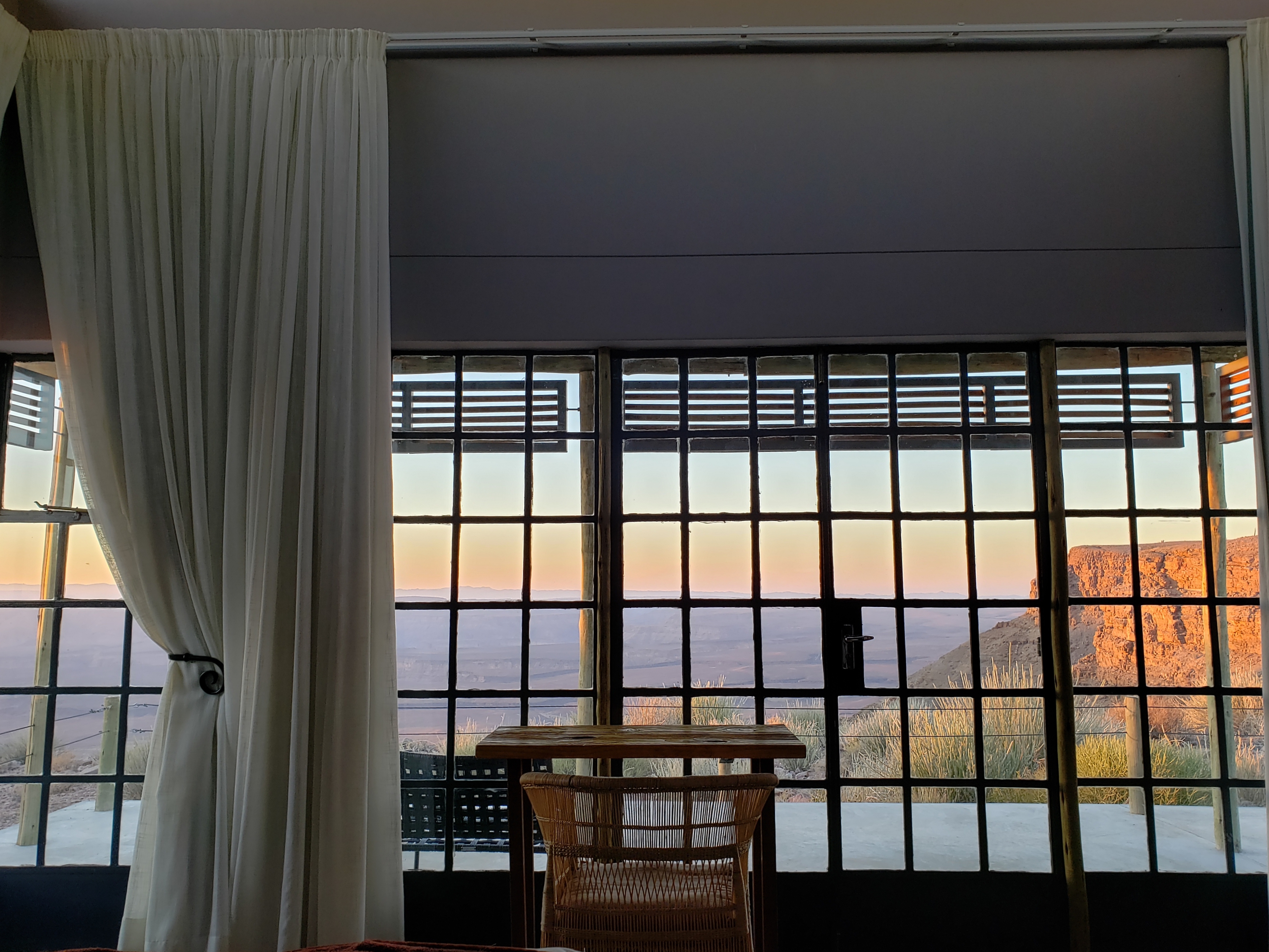
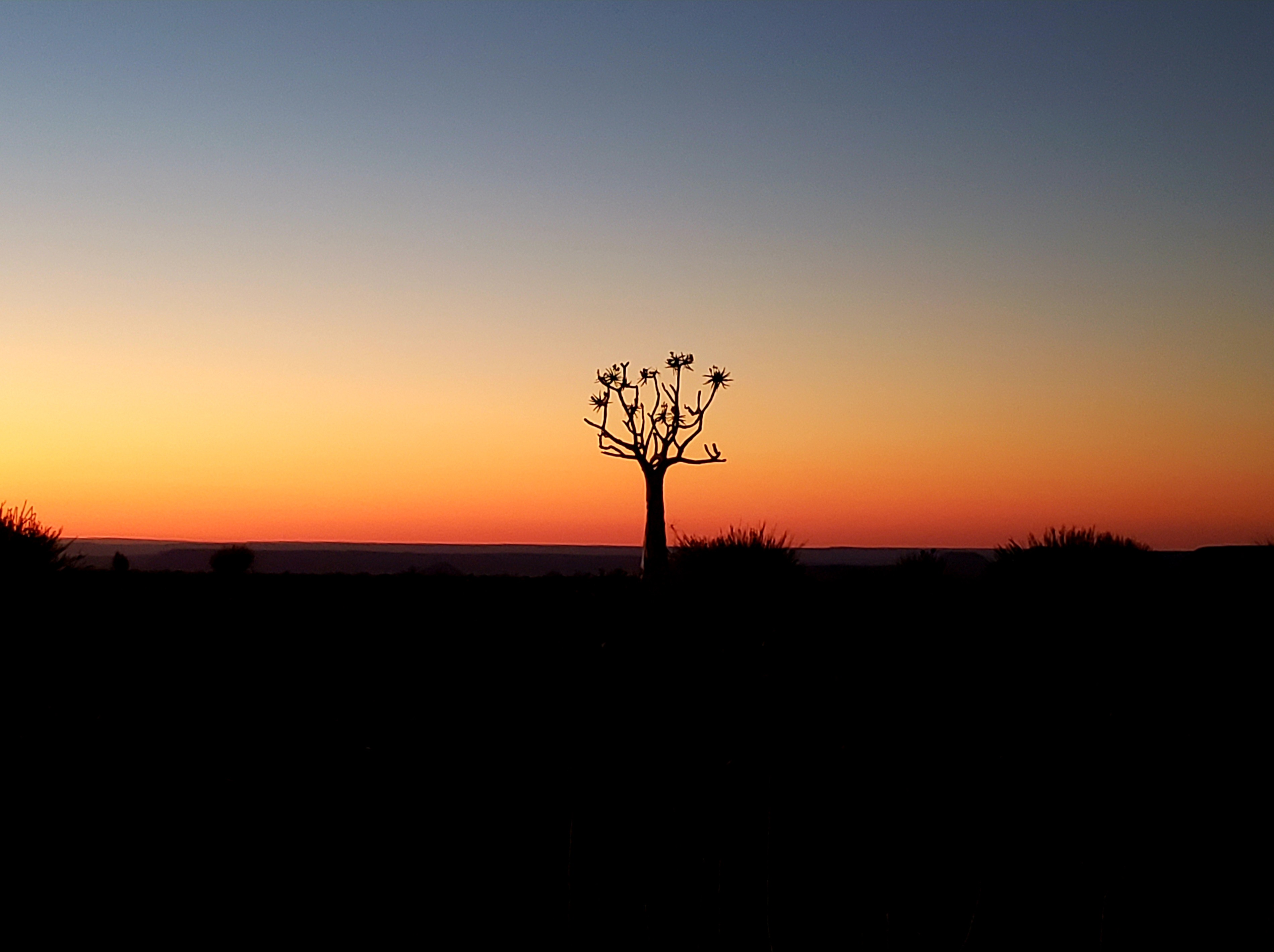
Throughout my journey I stayed in a variety of accommodations. Most were decent, one was quite quirky, none were downright awful, and a few were exceptional. It would be awhile before I stayed anywhere that was comparable to Fish River Lodge.
III. On the Road: Week Two (Fish River Canyon to Swakopmund)
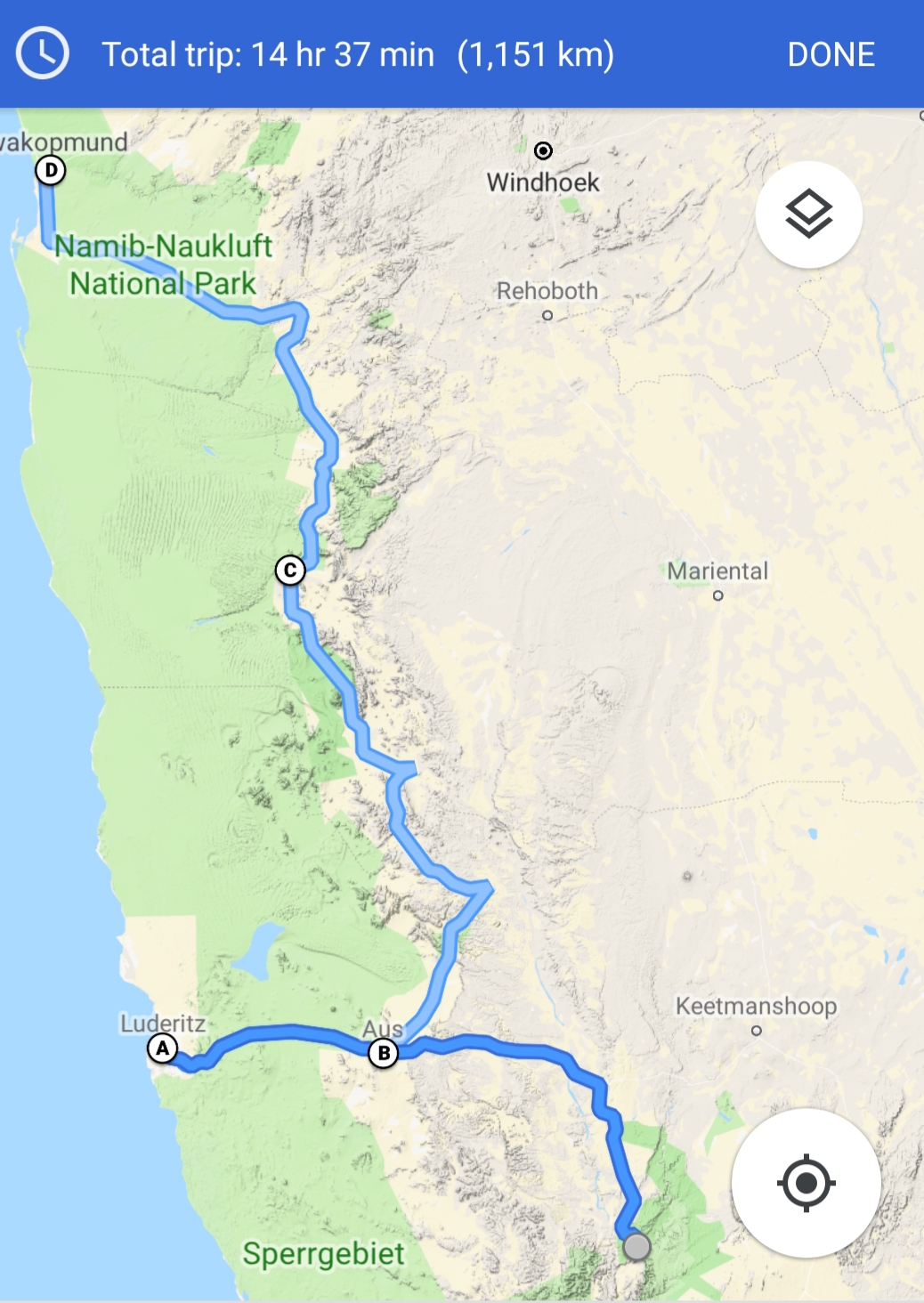 Fish River Canyon, Luderitz, Aus, Soussusvlei, Swakopmund
Fish River Canyon, Luderitz, Aus, Soussusvlei, Swakopmund
Luderitz was a detour I hesitated to make, but the nearby main attraction, Kolmanskop, an abandoned diamond mining town, with a fascinating history, seemed worth the effort. It was.
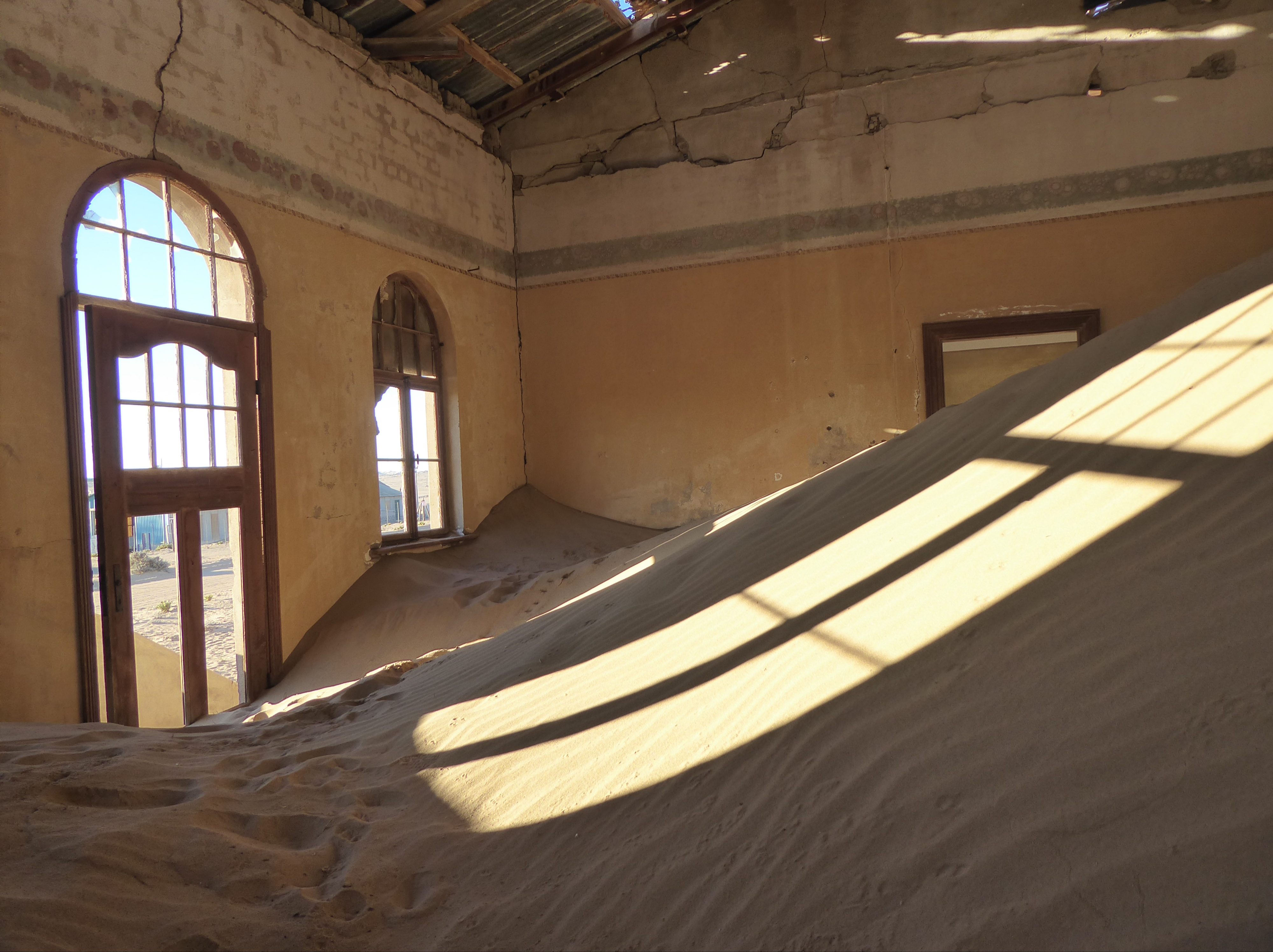
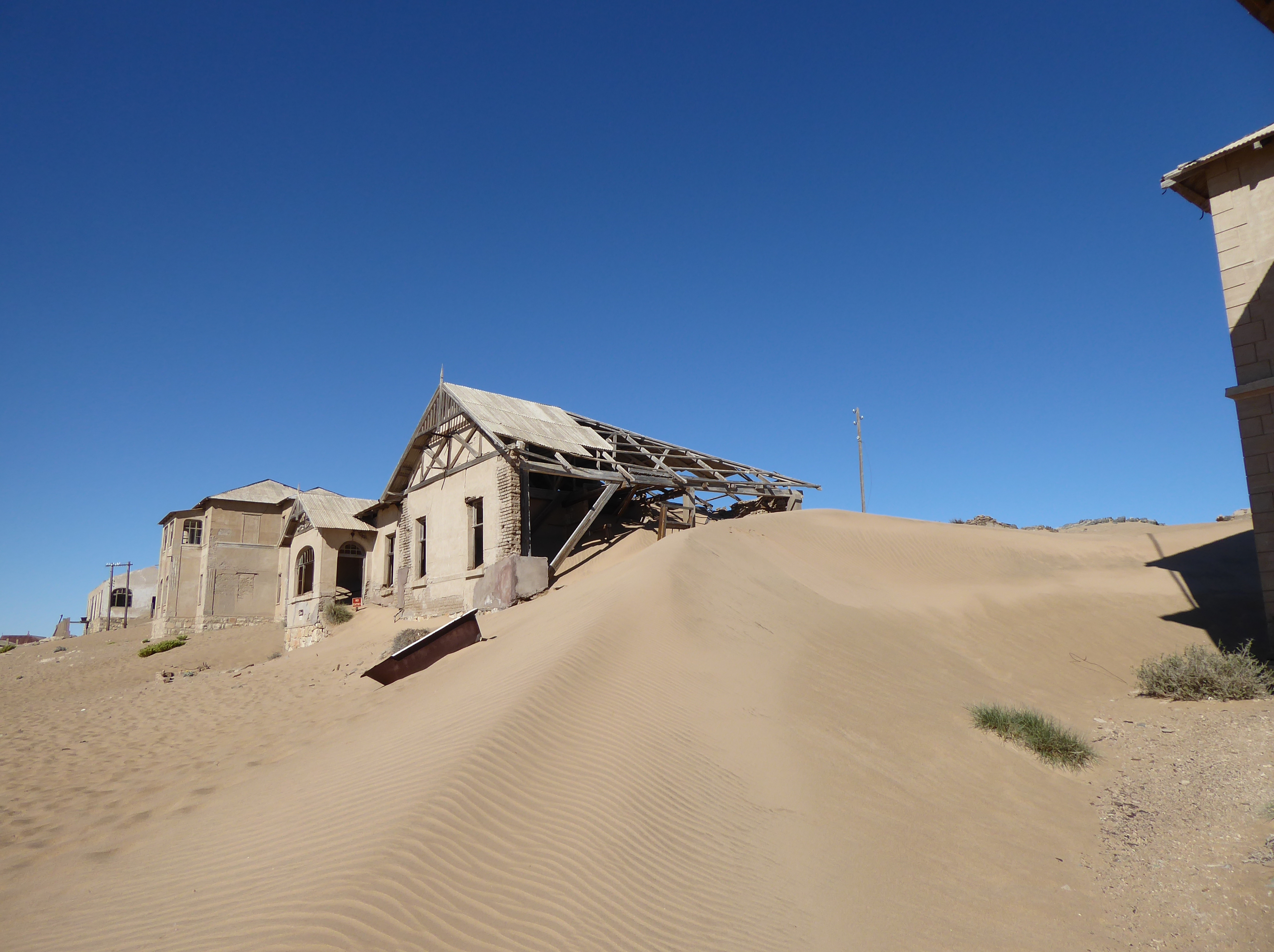
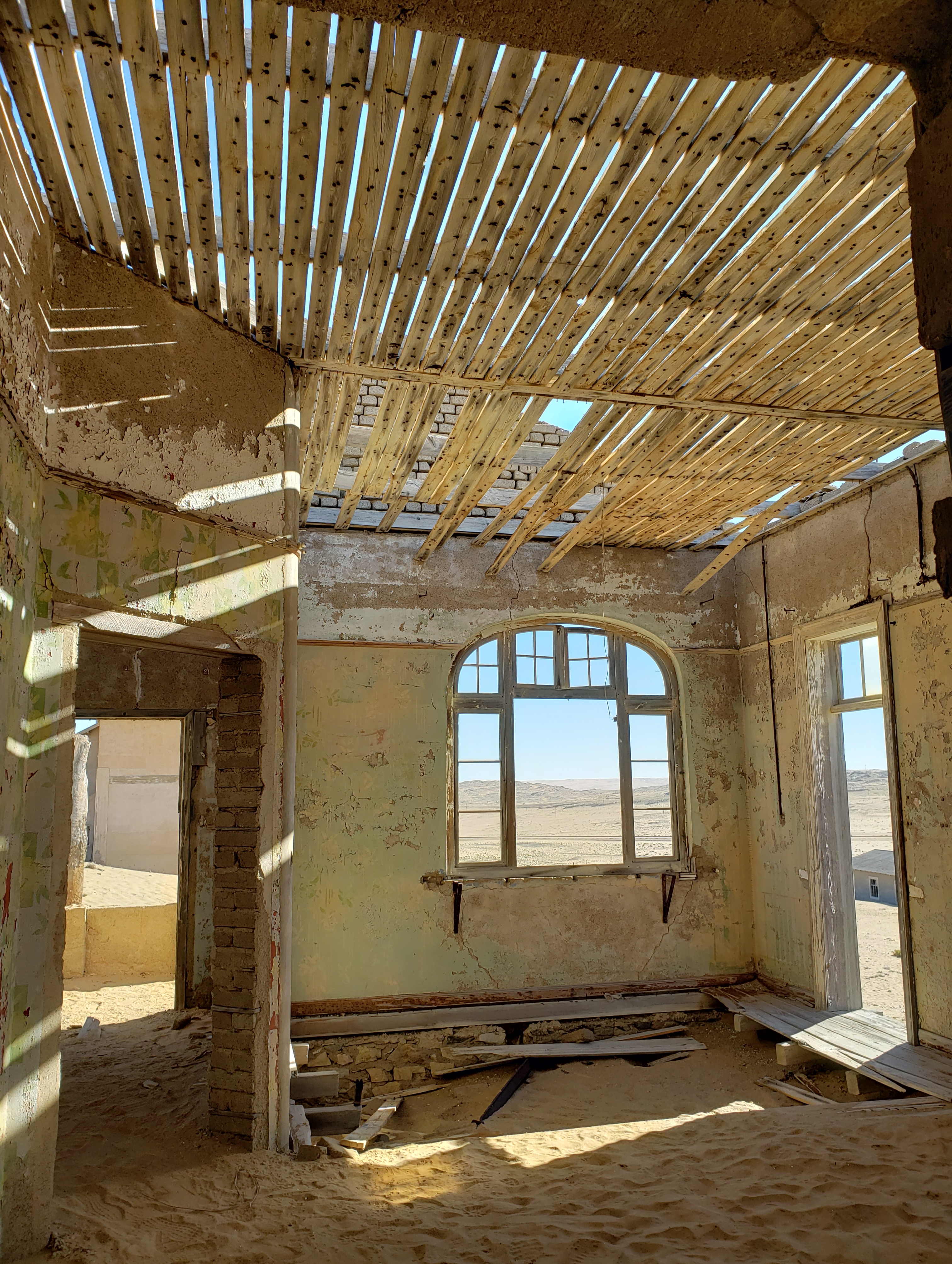
And Luderitz, with German colonial buildings, from Namibia’s time as a German colony, was far more charming than I had been led to believe.
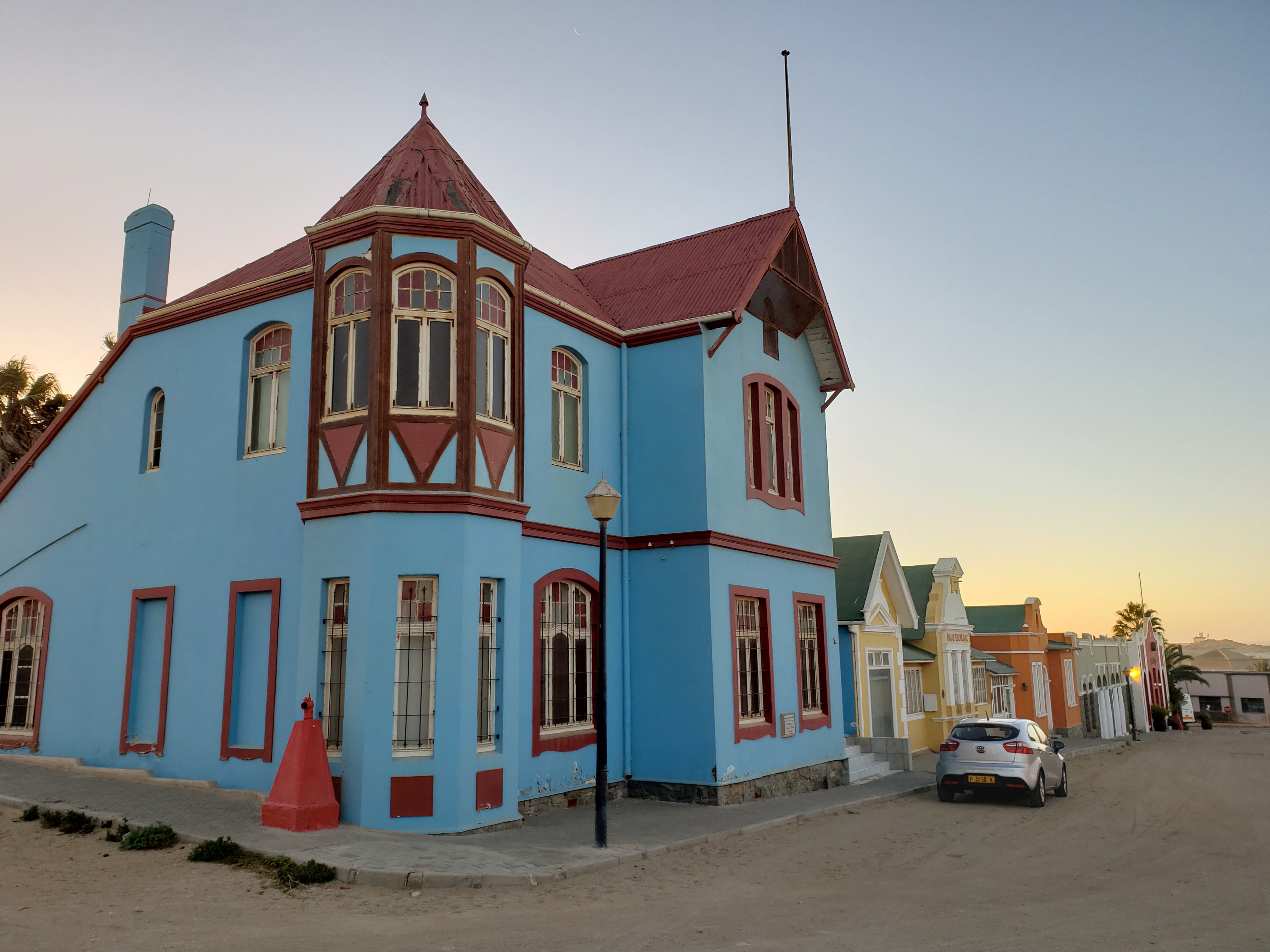
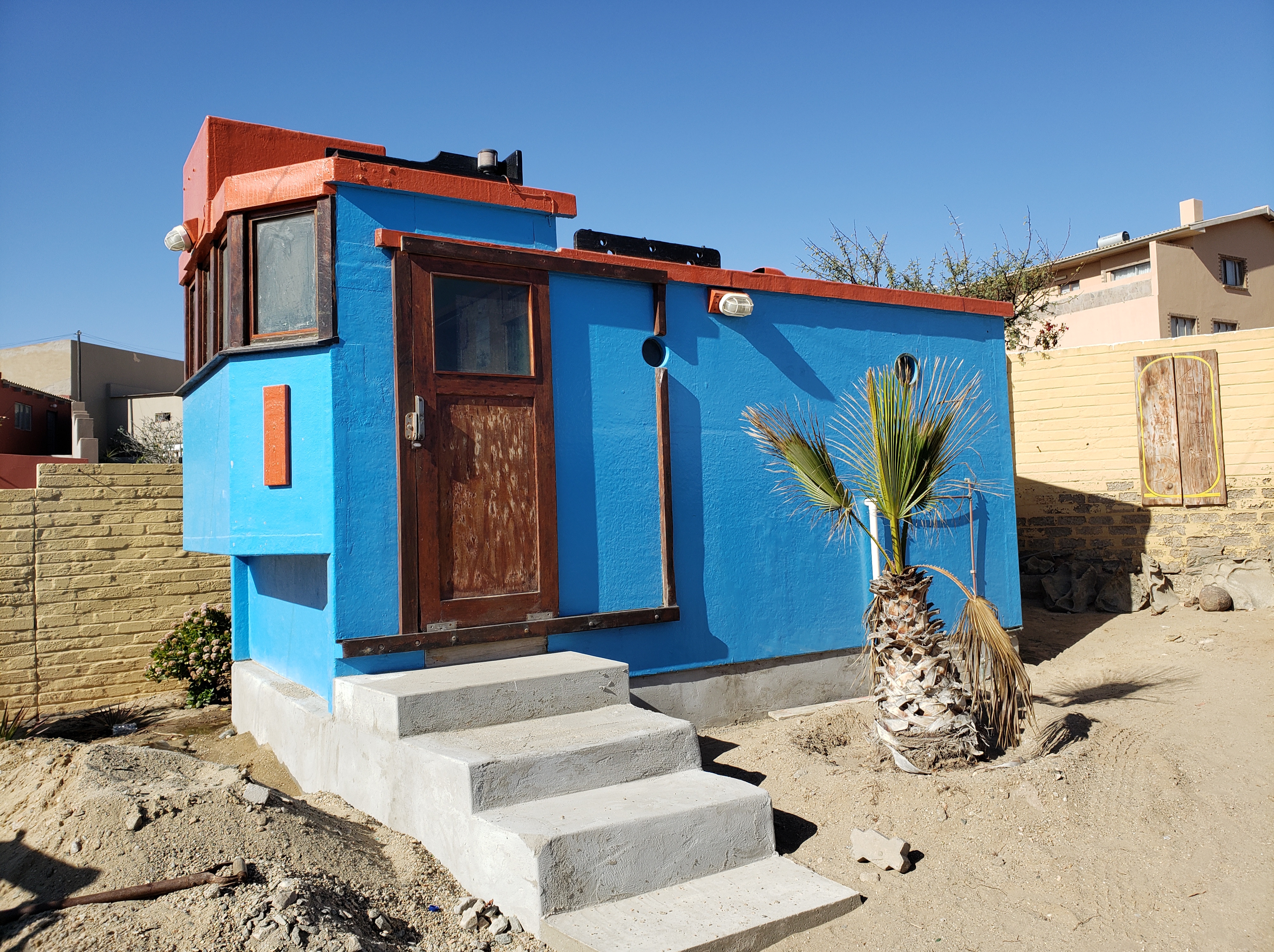
However, my strolls through the sleepy town belied its discord. The shipping of manganese through Luderitz’s port by train, started just this August, has pitted the residents against each other. The project is welcomed by some for economic gains, and according to others, not only threatens the nature of this quaint town, but the health of its residents. I sensed that both parties genuinely had the town’s best interest in mind.
******
Heading back to Aus for the night, I made a short detour to a shaded lookout in Garub. A trough was built to give a herd of feral horses, probably the only ones in all of Africa, a respite from the drought. Despite their extraordinary adaptions in this harsh environment, many horses had already succumbed to the lack of water. No doubt enticed by hand-outs of previous tourists, expressly forbidden, a horse came over to try his luck.
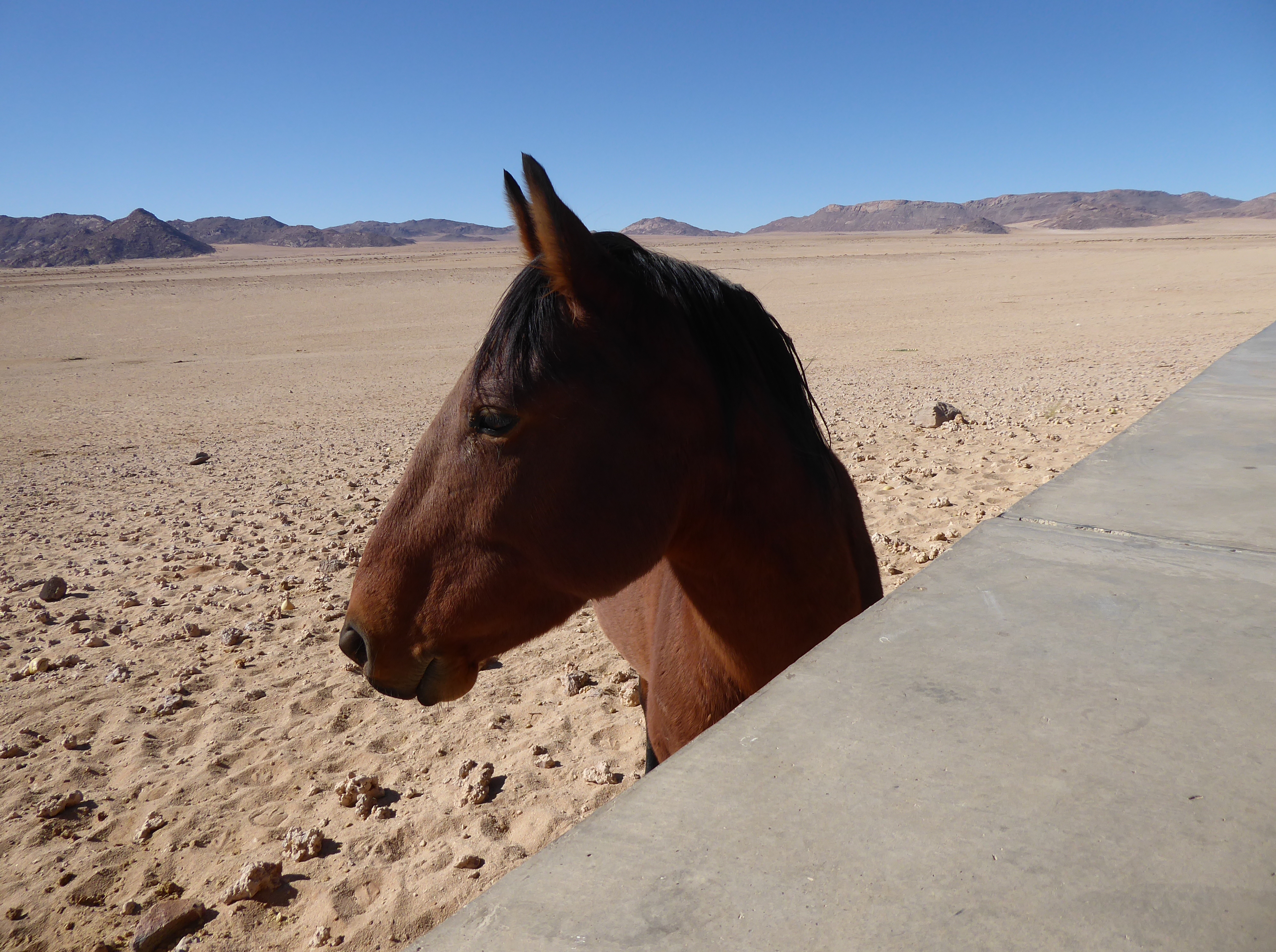
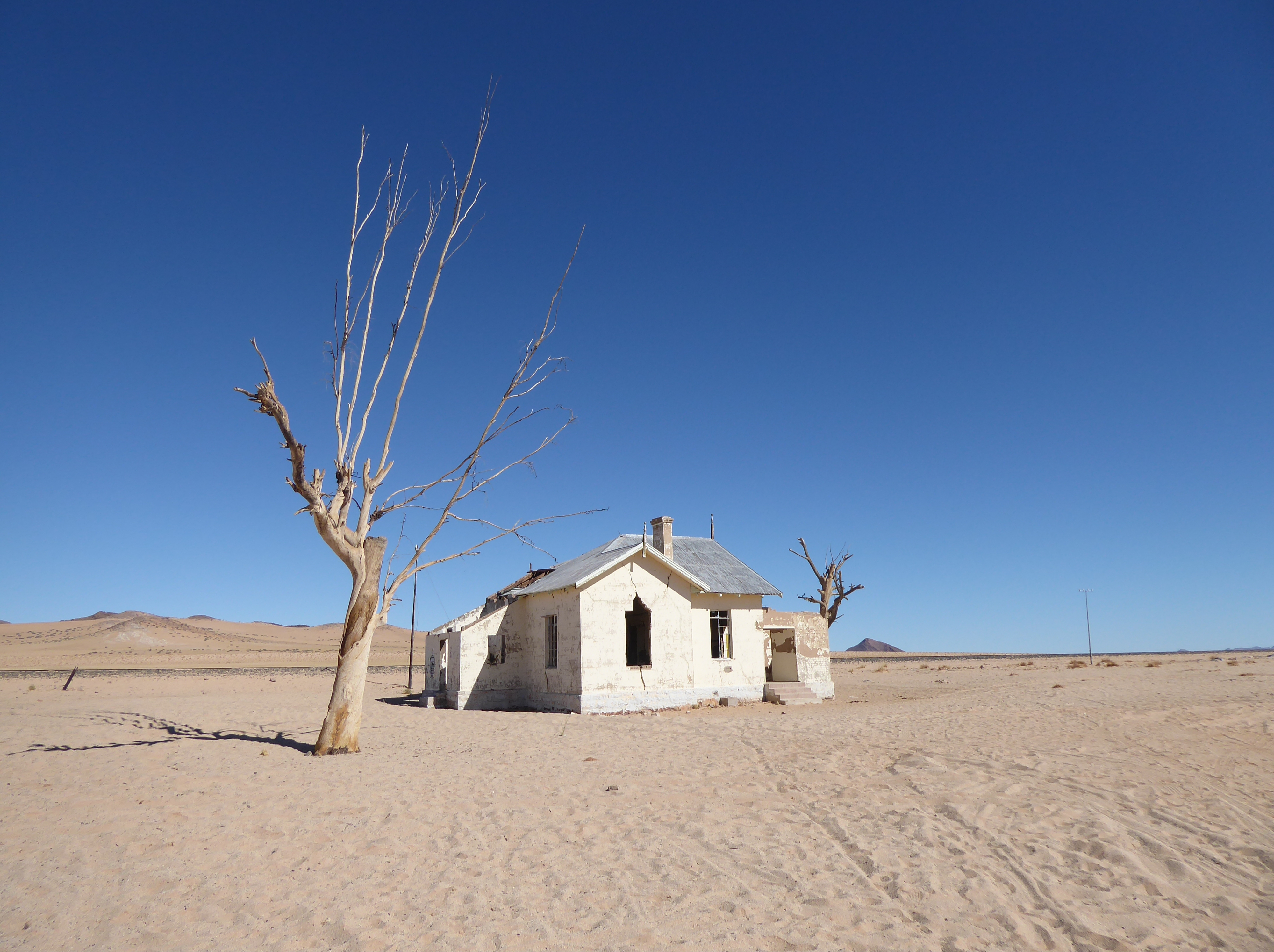

******
A side route D707 offered a splendor of golden fields, red hills, expansive sky, and roads with challenging deep sand.
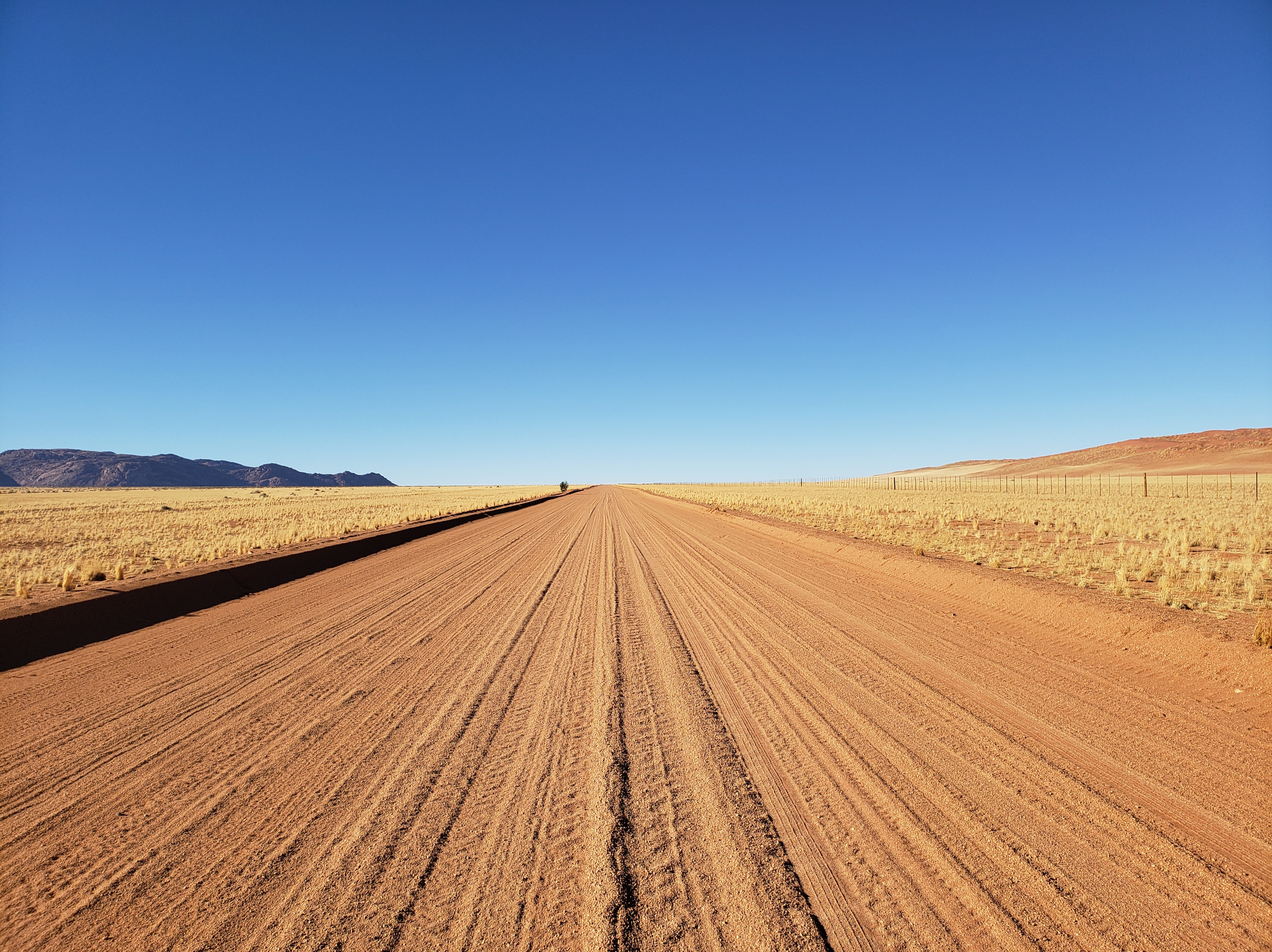
The iconic red dunes of Sossusvlei was my next destination…
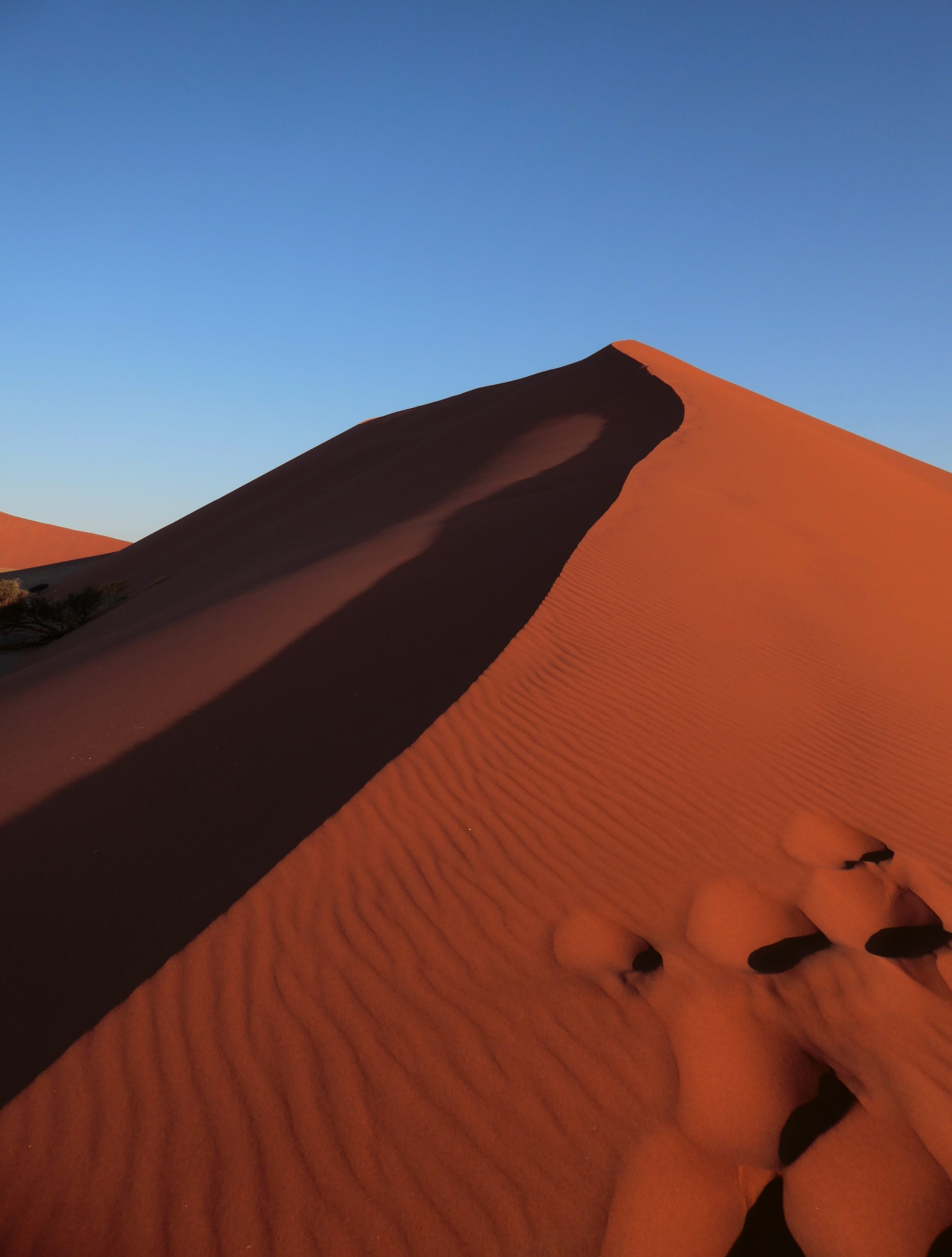
Continuously apprehensive about getting a flat tire, I tried to follow the advice of locals. “Avoid the sharp rocks in the road.” It was like trying to pet a spinning porcupine without touching one of its quills.
And then the inevitable happened. After noticing a strange sound, I stopped the car and got out to look. My rear tire was completely deflated. I suspected I’d been driving on it flat for some time. After voicing a few choice words, I began unloading my bags from the trunk to get to the spare while the scorching sun was high in the sky. The heat and dust was fierce.
I managed to loosen the lug nuts by standing on the lug wrench with my entire weight, and holding on to the roof. I then took out the jack and tried to imitate the actions of the man at the service station who had patiently gone through the entire procedure. It was by no means as easy as he had made it seem. But I was very lucky. Within minutes a couple of tourists and some employees from a nearby lodge arrived at the same time to lend a hand. It was a huge relief and I was soon back on the road .
After replacing the tire at a service station, it was beyond repair, I pulled into Sossusvlei Lodge dusty, and tired. I was delighted I had booked three nights there.
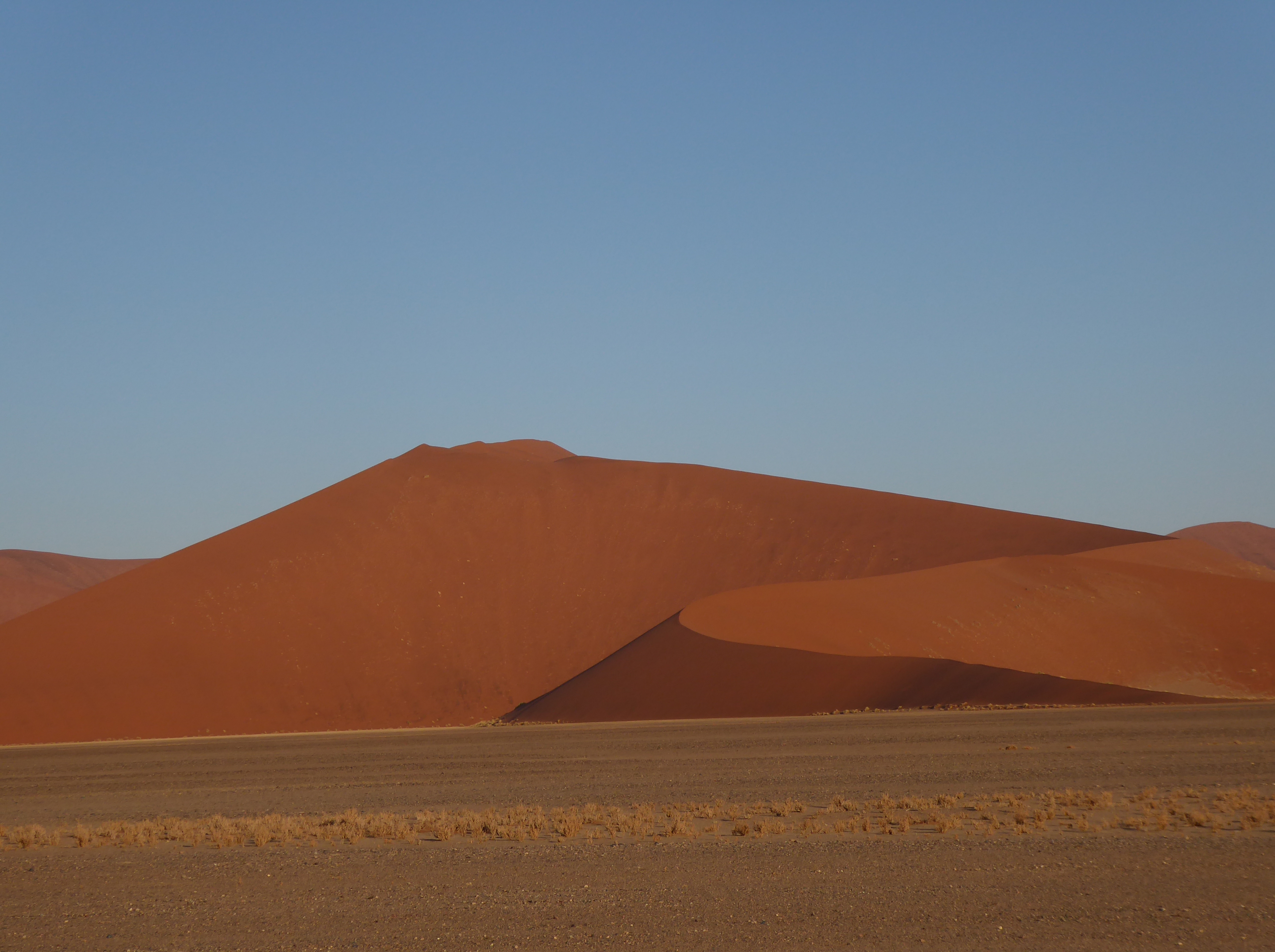
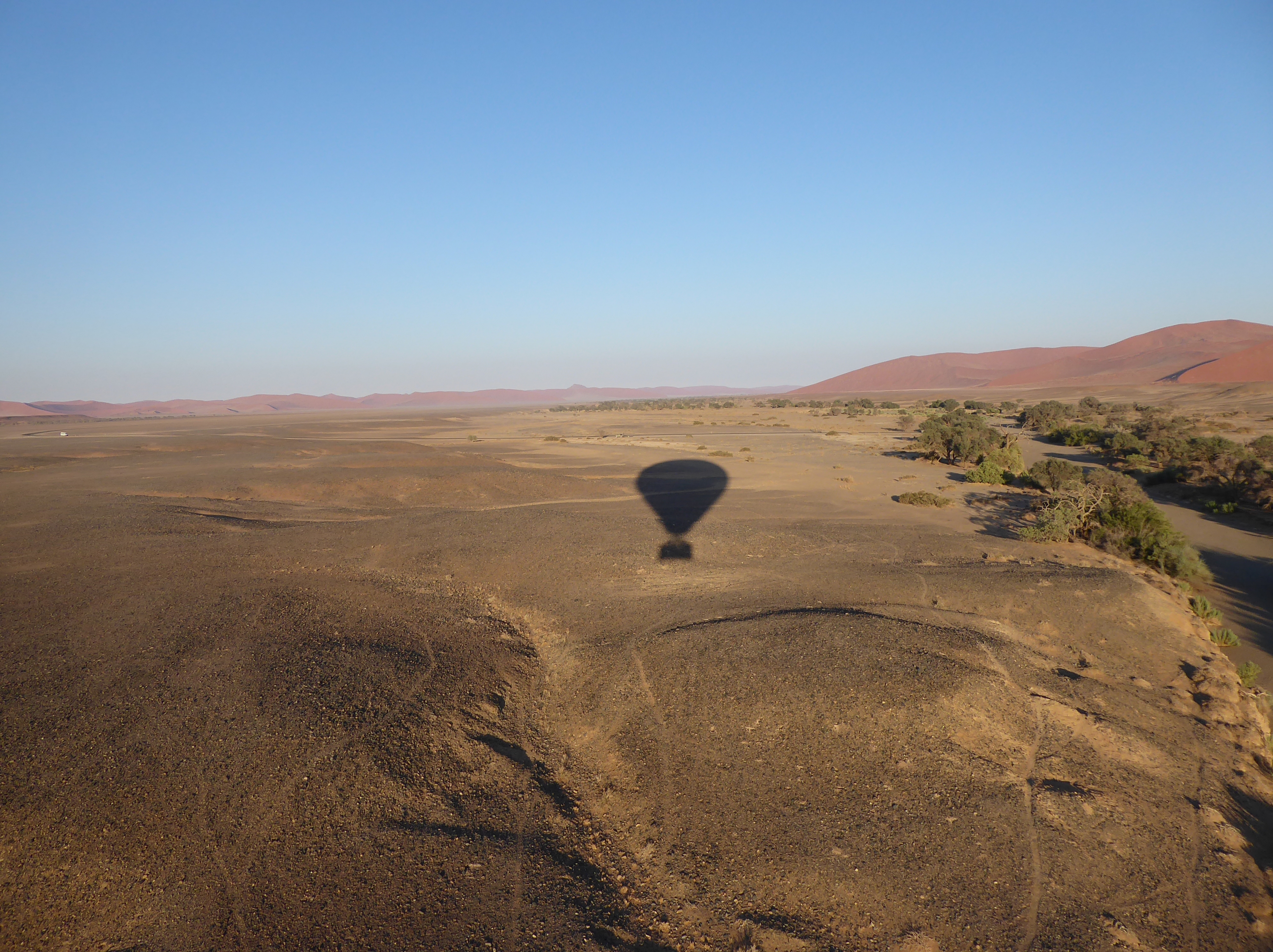
It gave me ample time to visit the exquisite dunes and the eerie Deadvlei. The colors of the sand varied with the light.
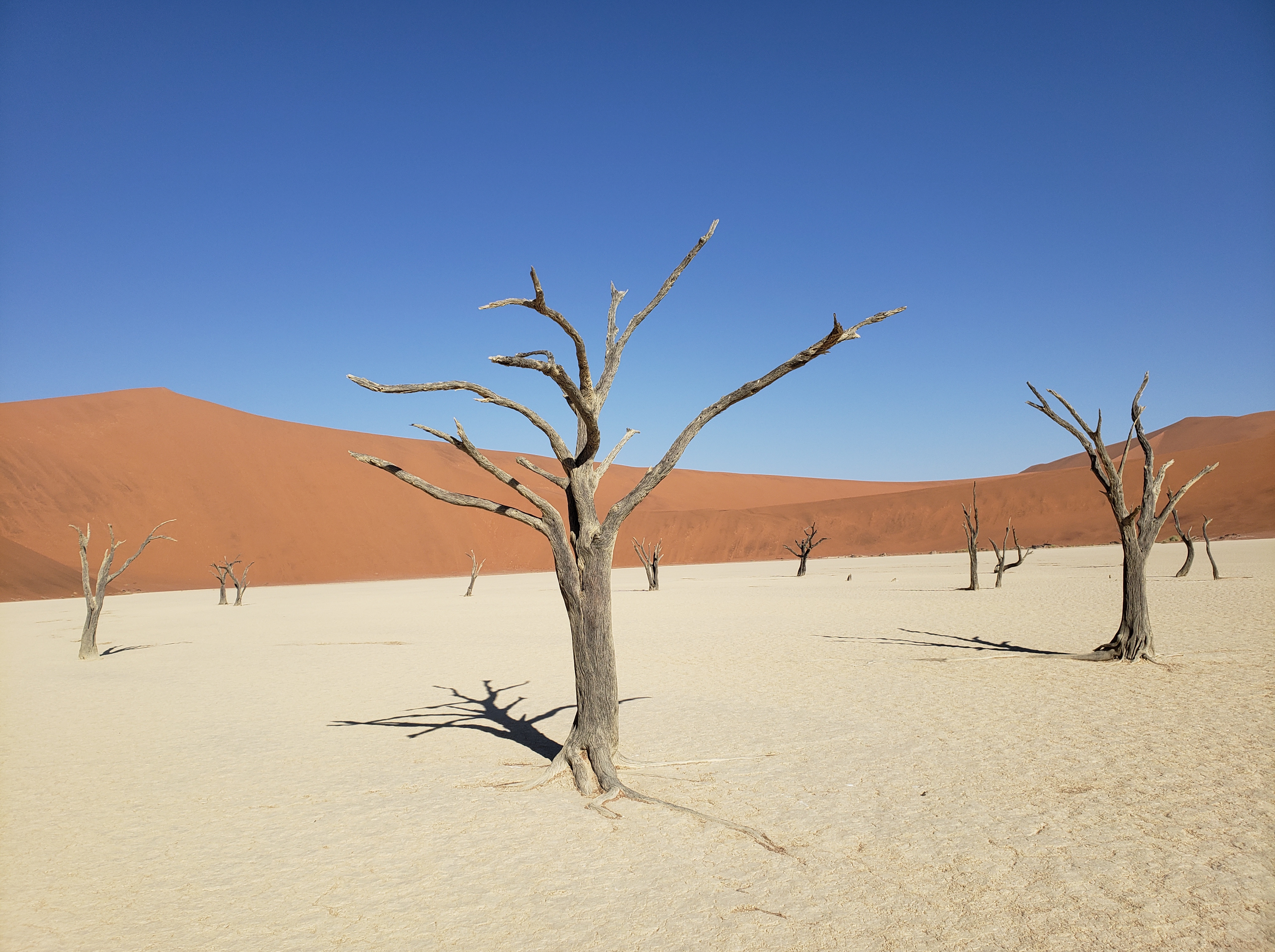
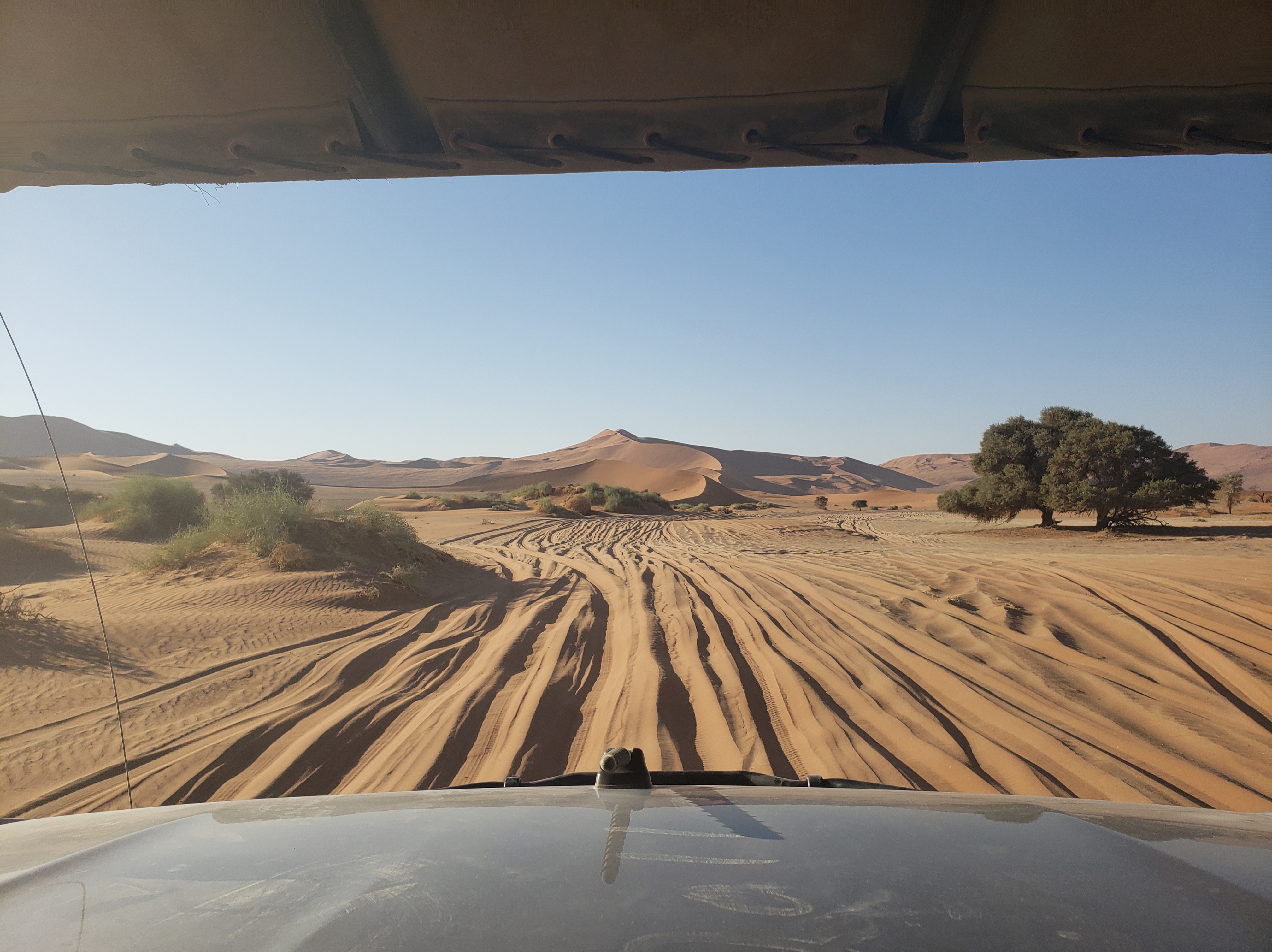
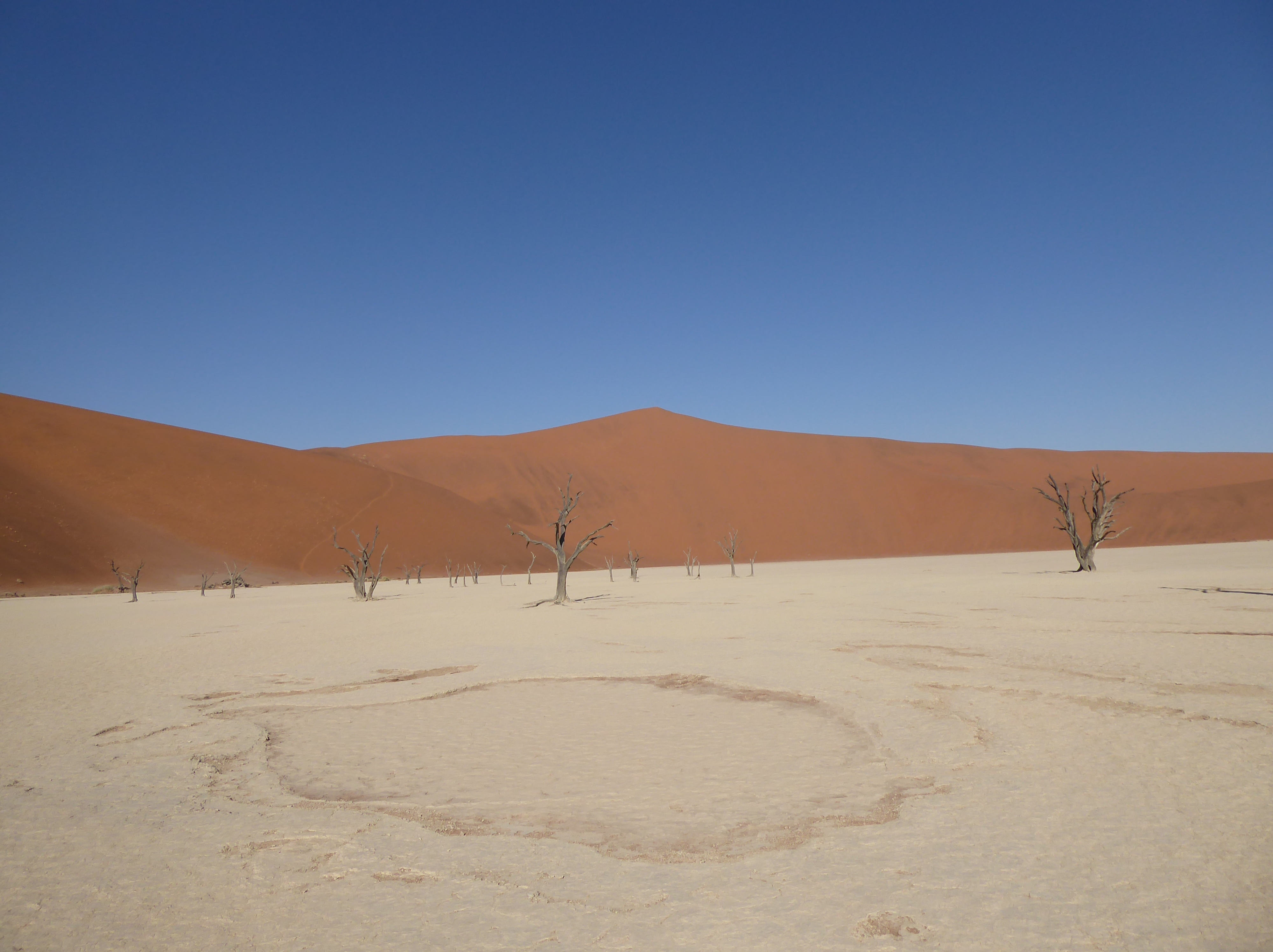
******
The time passed quickly and I was soon back on the road. I made an obligatory stop in Solitaire.
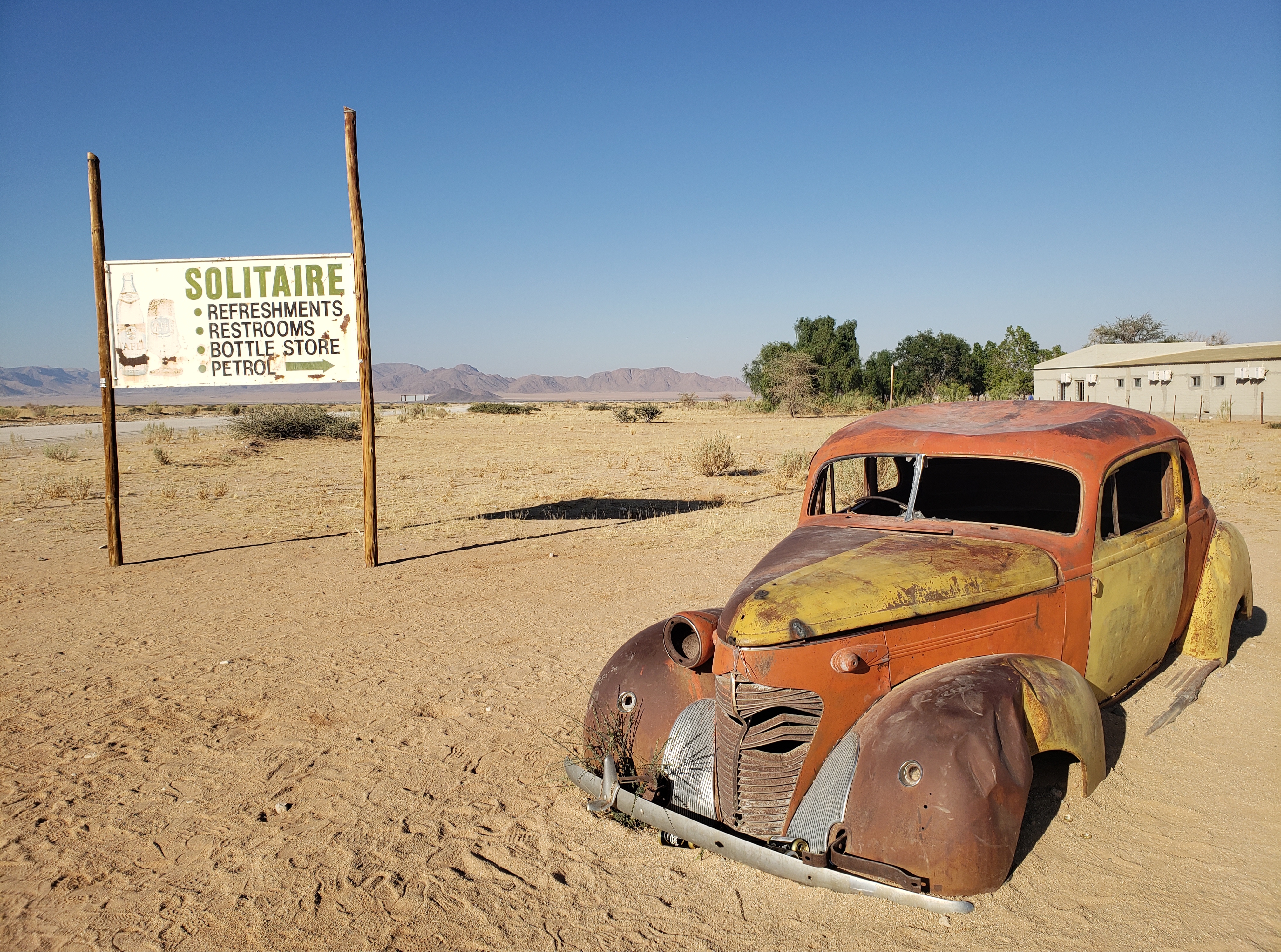
Refreshed, I made my way toward Swakopmund.
The long, vacant, endless stretch of road led to ascending and descending one hill, then another, and another, and another…
Despite the challenges of dust and rocks and the long unvarying roads, I began to relax and appreciate, for the most part, the long hours behind the wheel. Some music would have been nice, but there was no reception and it only occurred to me after the trip was over that I could have downloaded some tunes .
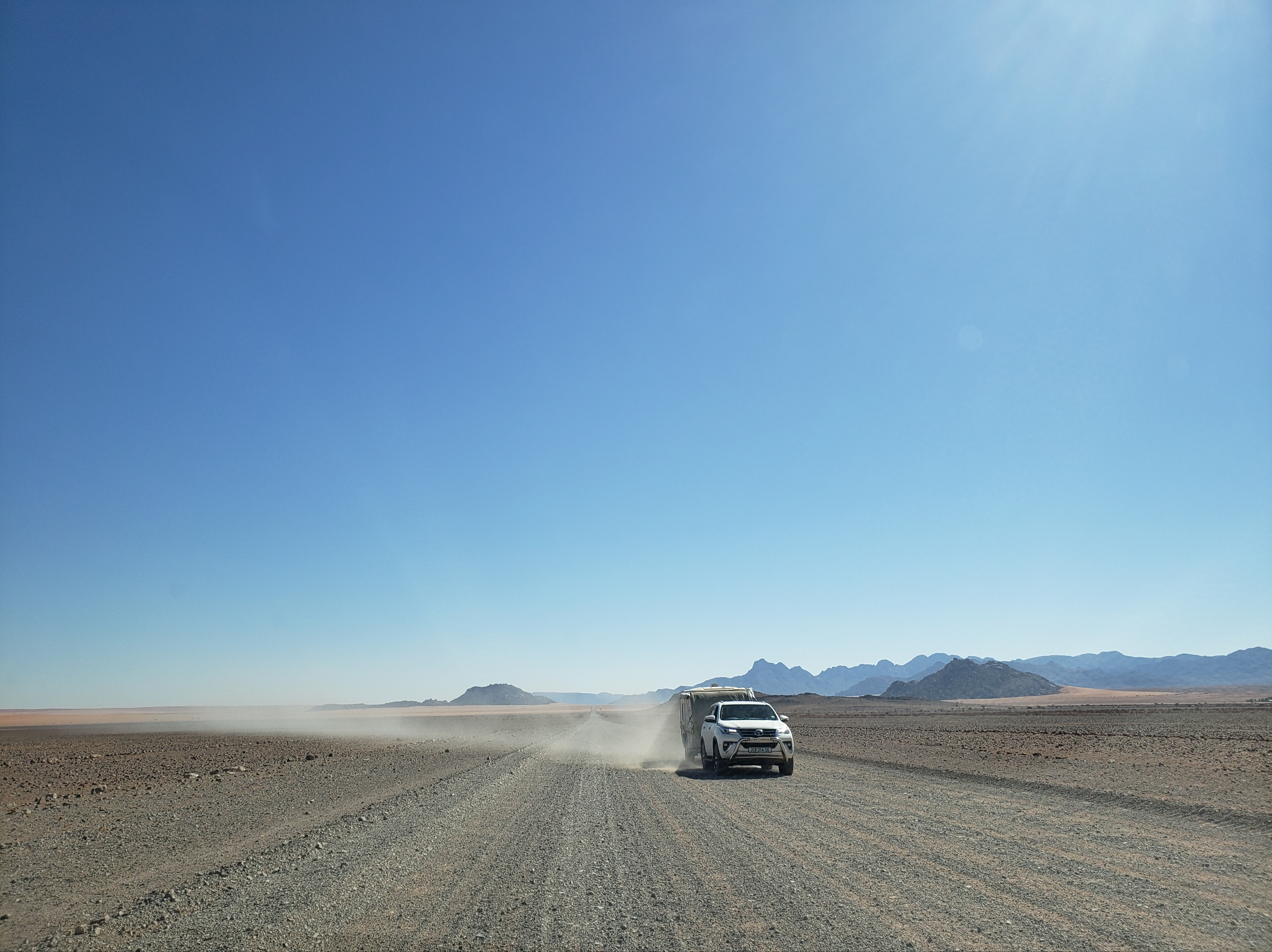
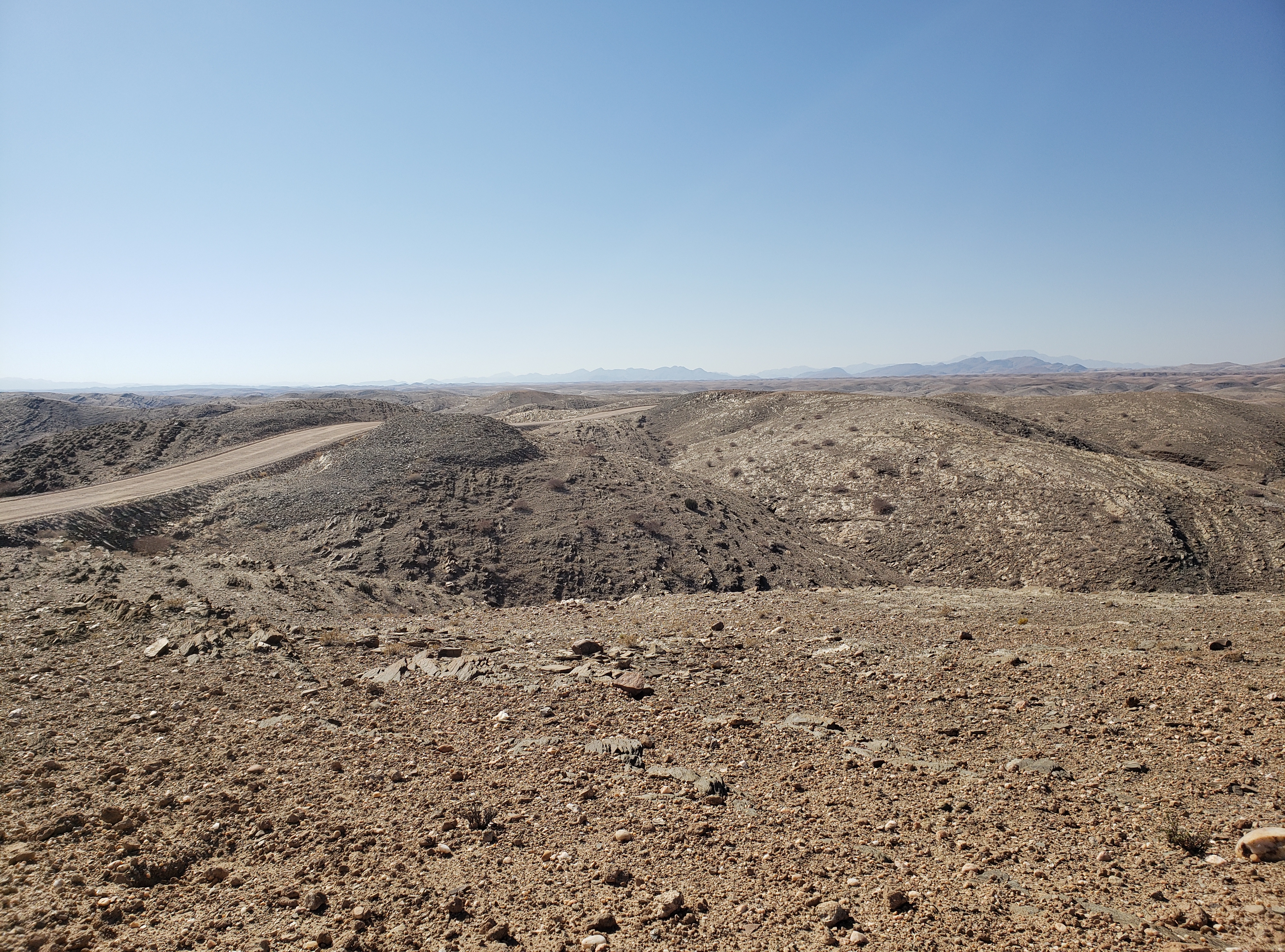
*****
Finally, after an interminable stretch of undulating highway I reached Swakopmund on the coast. I’d been warned about the cold rainy weather, but was welcomed with a warm breeze and bright sunshine. I rented a simple, but cozy, apartment a few blocks from the sea.
In those next few days I got a hair-raising tour of massive dunes in Walvis Bay, went kayaking with a colony of seals, espied flocks of flamingos, and walked along the ocean.
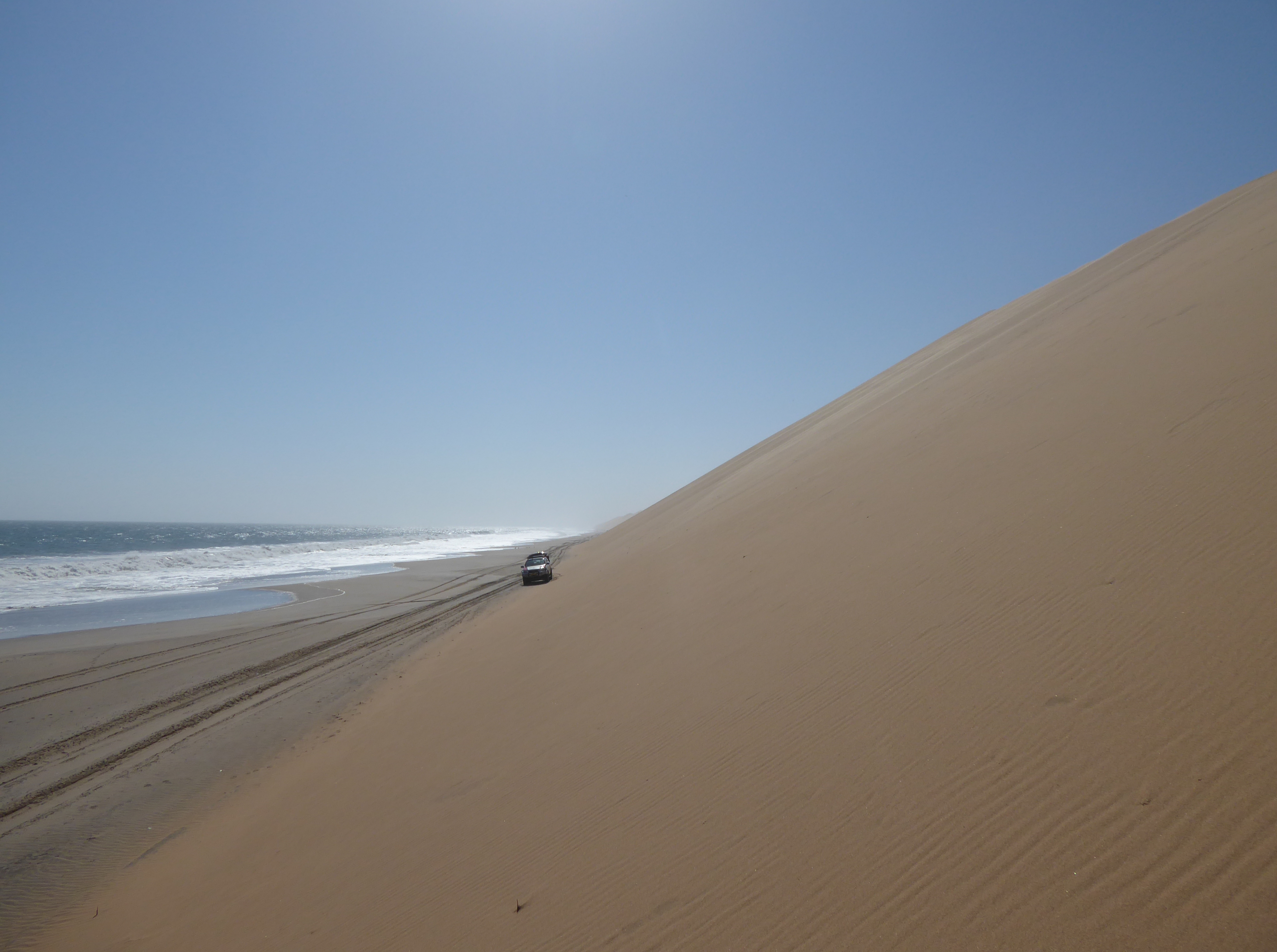
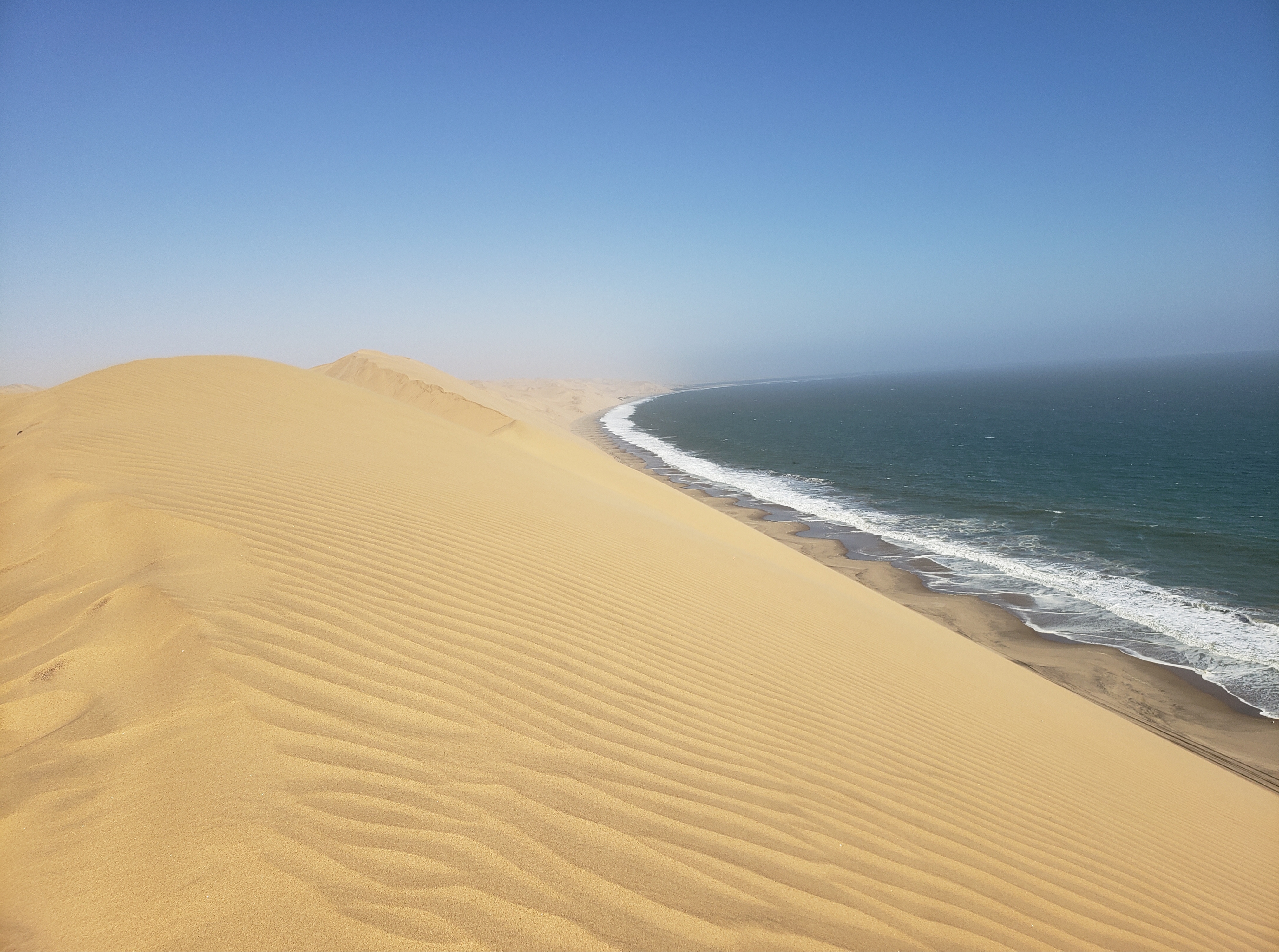
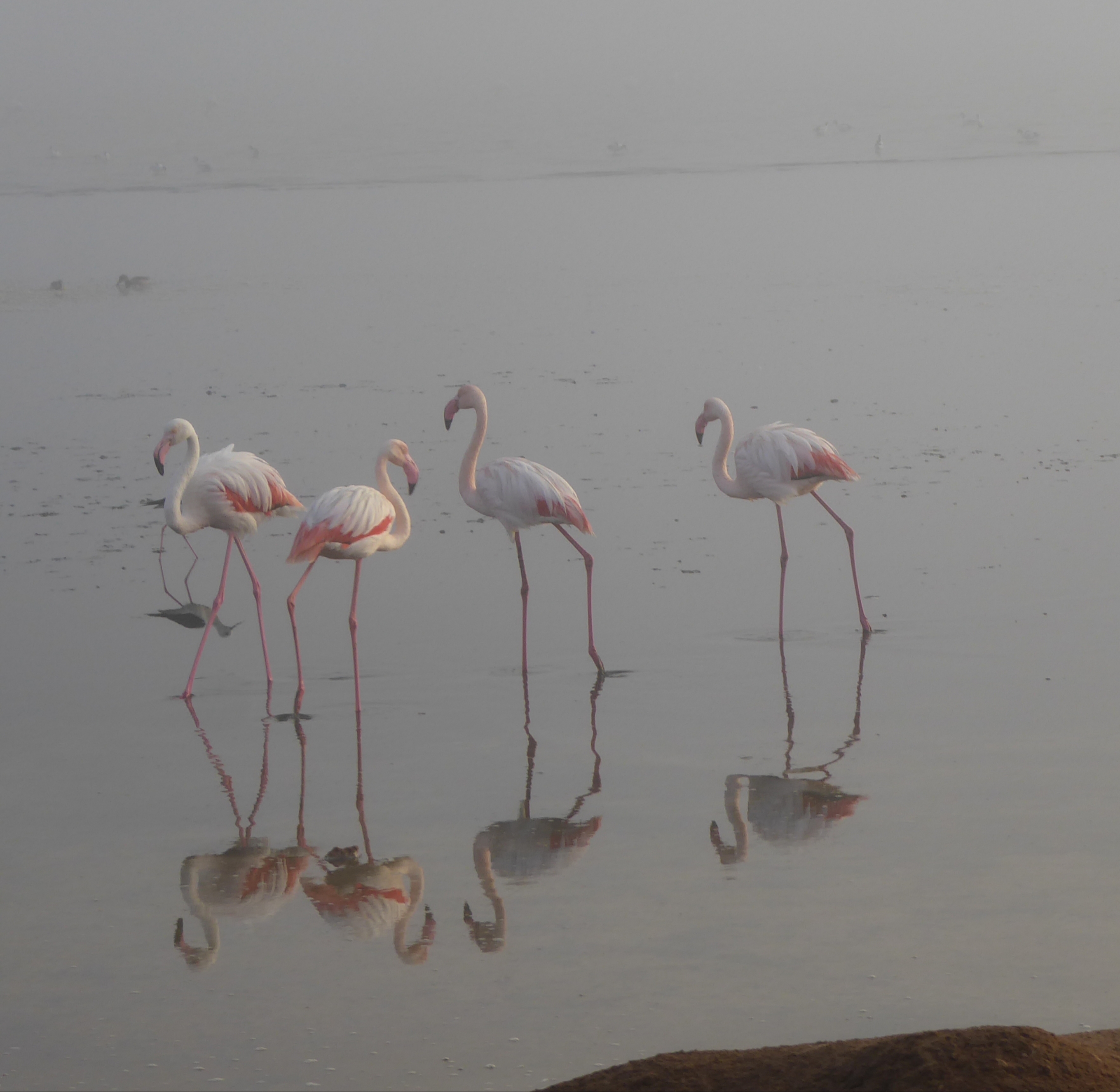
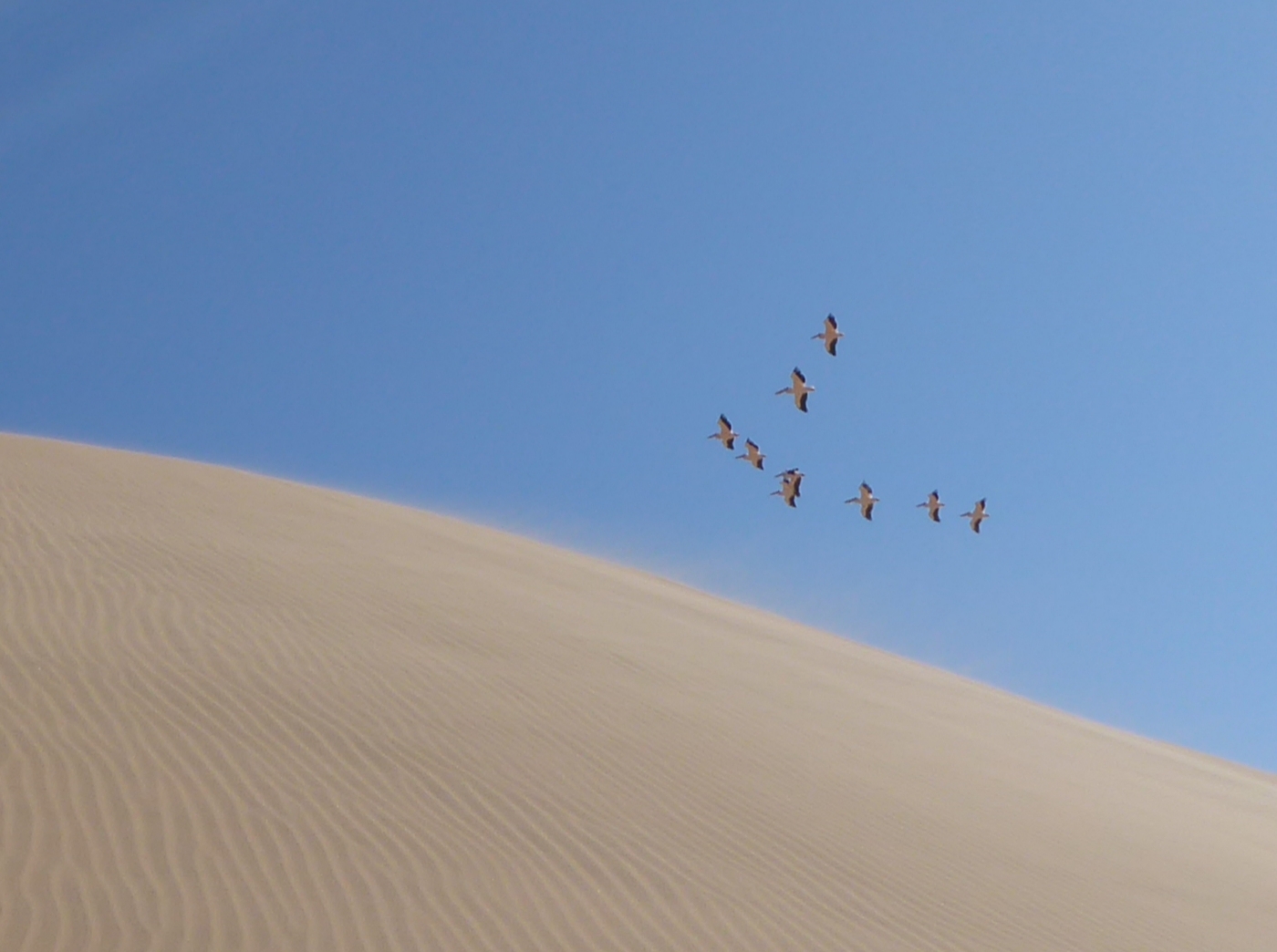
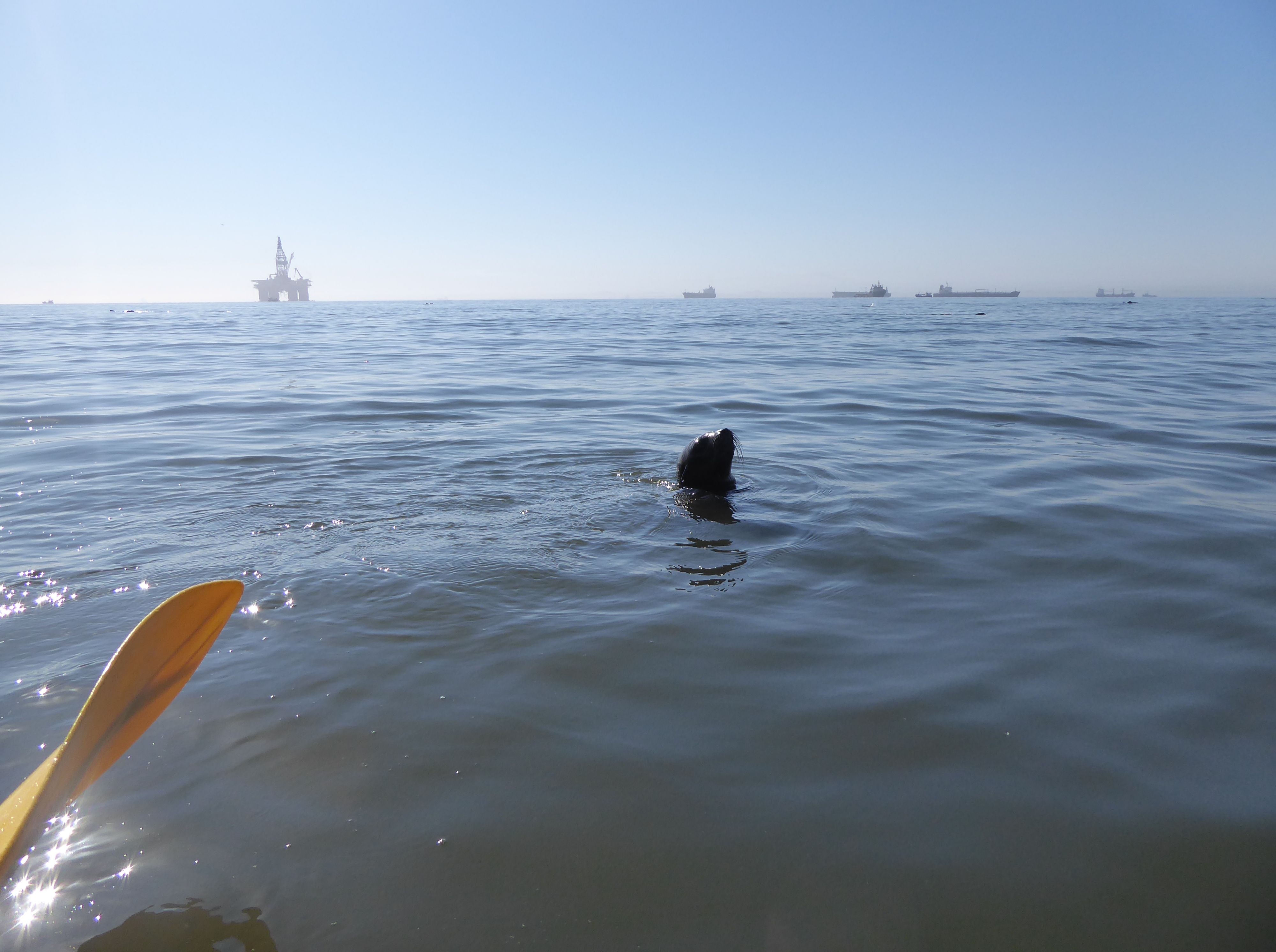
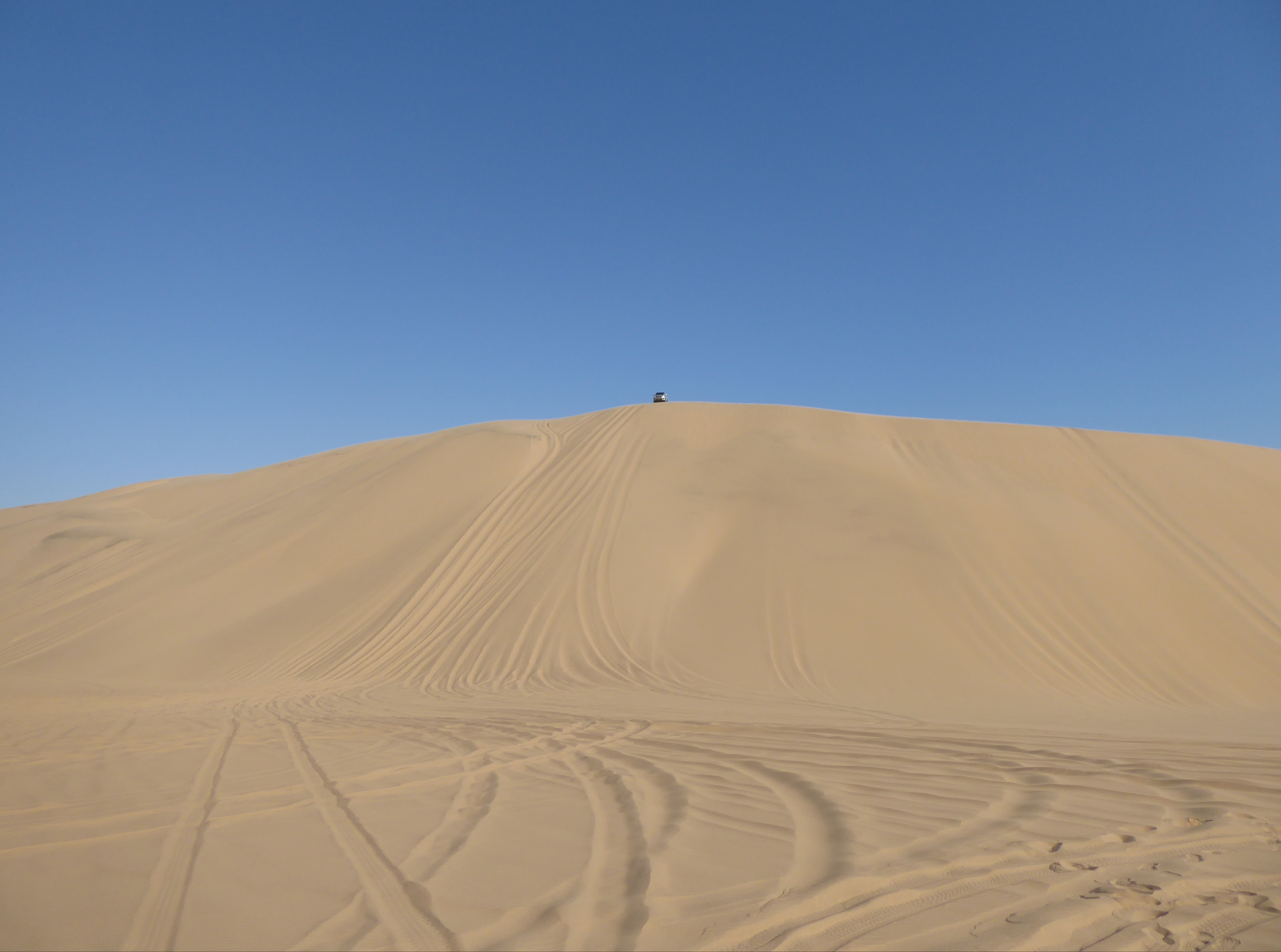
I regretted having only three nights. After two weeks of travel, relaxing by the sea would have been welcome, but I decided to keep to my schedule and forge on.
To be continued…